








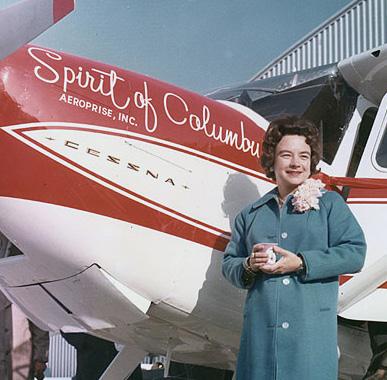





















It wasn’t until the year 1902 that humans discovered mountain gorillas.
While we knew about other gorilla species thousands of years before then, it’s difficult to imagine how a six foot tall, and 400-plus pound animal could elude classification for so long.
The same goes for the giant squid, the 40 foot animal that was first seen alive less than 20 years ago; or the ivorybilled woodpecker, the massive bayou-dwelling species that was thought to be extinct in the United States since 1944, until a short segment of grainy video from 2004 appears to show one lone bird fluttering out of an Arkansas swamp, like a ghost in brilliant plumage.
The point is this: There’s always more we can learn about the world, and there are truly incredible things we find hidden in plain sight all the time.
And the same holds true for the city of Columbus. Did you know the city was once home to a world-class amusement park, or that the first woman to fly solo around the world was a Bexley resident? Did you know that Dave Grohl was once hit by a car in Clintonville, or that Elvis Costello instigated a brawl while drinking at a local hotel bar in 1979?
I could go on, but you probably get the point: If we really look, no matter where we are, we can find incredible things. There’s something beautiful about this too, how it makes us really reconsider, if only for a short time, a place we know so well, how it makes it feel alive, mysterious, slightly dangerous and fun all over again.
That’s what we hope to accomplish with our December 2022 issue: The Secret City. For the cover section, Columbus historian John M. Clark has reached back into the Arch City’s past to uncover a handful of truly fascinating stories that you likely didn’t know about beforehand.
Many believe that December is often a month to look back and assess, and we don’t disagree. In fact, that’s what we’re doing too, we just so happen to be having a whole lot more fun with it. We hope you will too.

Happy holidays, Columbus, and welcome to The Secret City.




This month, our cover section is dedicated to looking back at the vibrant, and sometimes highly unusual, history of our city. Because of this, we asked the (614) staff to do a little looking back of their own, and share what they’re most nostalgic for in Columbus. Here’s what they had to say.
I've only lived here since 2018, but I already miss Neighbor's Deli.
— Jack McLaughlin, Editor

I still remember being GEEKED when my mom said we could go to The Kahiki for a special occasion dinner.
—Lizzy Saunders, Brand Manager, (614) Beer
Yes, Kahiki! Plus, holidays at City Center, a field trip (on my birthday!) to AmeriFlora and the original COSI.
— Lindsay Press, CEO
Southside Drive-In anyone?

— Austin Black, Video Producer/Editor
Some old campus bars, their stories will live on...Mean Mr. Mustard's, Papa Joe's, Park Alley, Fletcher's, South Heidelberg, Crazy Mama's, Mama's Pasta & Brew, Bernie's Bagels, Skankland.

— Meggin Weimerskirch, Advertising Director
Hanging out at Northland Mall until our movie started. Fourth of July Fireworks at Whetstone Park of Roses. Going to Beechwold Pharmacy after school to enjoy their soda fountain–the last one in Columbus. Dining at One Nation at Sunset
— Paul VanHorn, Account Executive
City Center, Campus bars and Nancy's Home Cooking on a Saturday morning (best recovery after campus bars - ha!)
— Mindy Wilhite, Senior Account Executive


Do you check your news and entertainment updates on 614now.com? You should. Every day we’re posting Columbus’s top news, entertainment, and sports stories from throughout Central Ohio. Check out all the Columbus news online, including the new ones below at 614now.com and suscribe to our daily email!
→ This Columbus diner is the best in the entire state, according to Google reviews
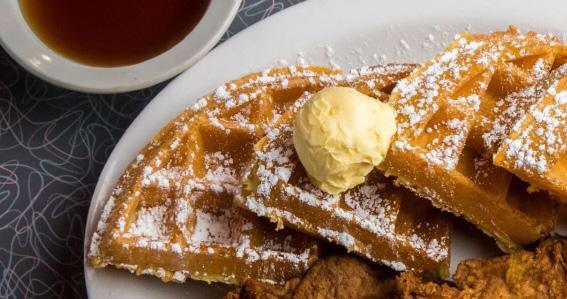
According to more than two and a half thousand Google reviewers, that one is Tommy’s Diner. At the time this story was published, Tommy’s boats a net 4.7 stars across 2,600 reviews on the ubiquitous platform.
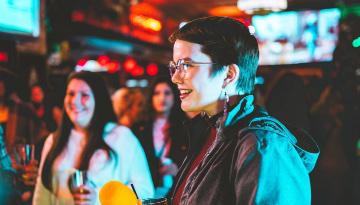

→ This Short North bar is holding a series of Drunk Spelling Bees spelling a word like “ameliorate” is hard enough when you’re stone cold sober. Add a few drinks plus an informal setting with friends, and you have yourself a hilarious good time.
→ Historic Crew Stadium to be transformed by more than two million lights for unique holiday event
Even though the Historic Crew Stadium no longer hosts home games for the Columbus Crew, a new holiday installation is bringing match-day levels of excitement to Franklinton.
Did you know that (614) launched a YouTube channel with some very shareable video content? It’s true. Keep an eye out for more on our (614) Columbus account and on social media. In the meantime, check out the newest videos on our channel: • Tasting Columbus—NEW episode!
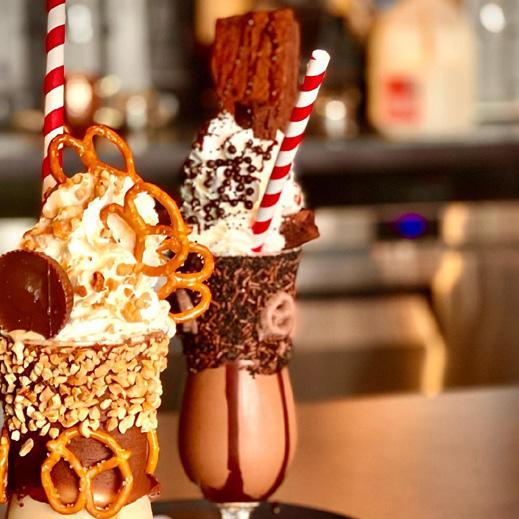


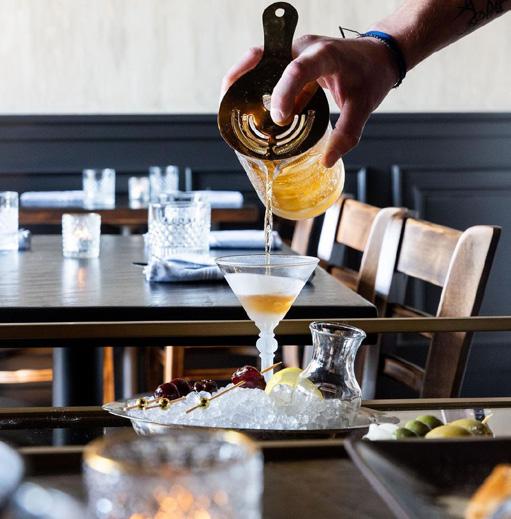

Have you checked out our TV show “Tasting Columbus?” Join food scientist Matt Teegarden as he eats his way through Columbus’ food scene. Make sure to tune in at tastingcolumbus.com or scan the QR code above.

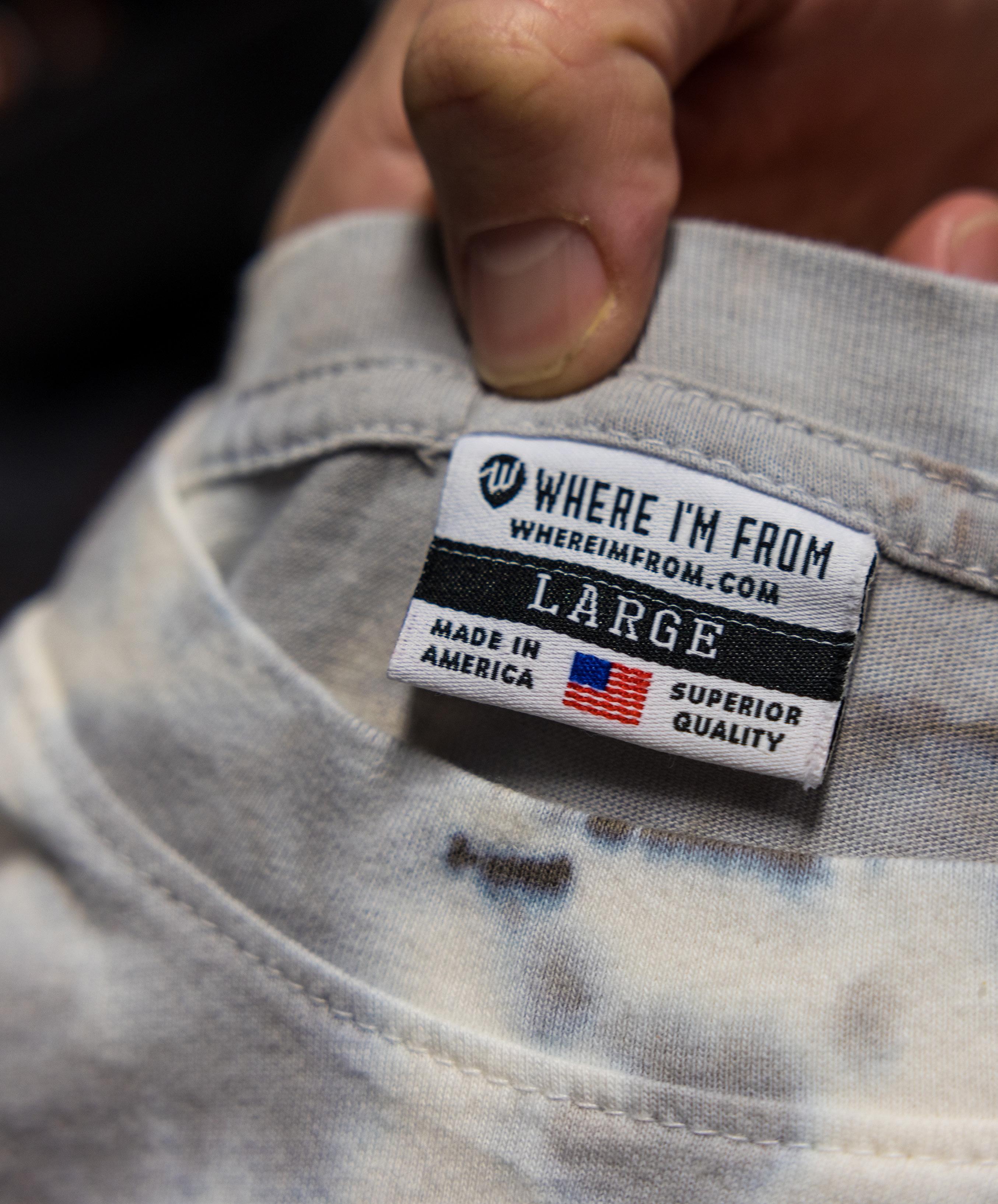
Today, the Columbus-based apparel brand Where I’m From is available in 200 Dick’s Sporting Goods and 115 DSW storefronts across the country. The brand also supplies the Columbus Blue Jackets and Clippers with regular products from their new 20,000 squarefoot warehouse, and boasts licensing deals with NFL superstar Joe Burrow and former Browns quarterback Baker Mayfield.

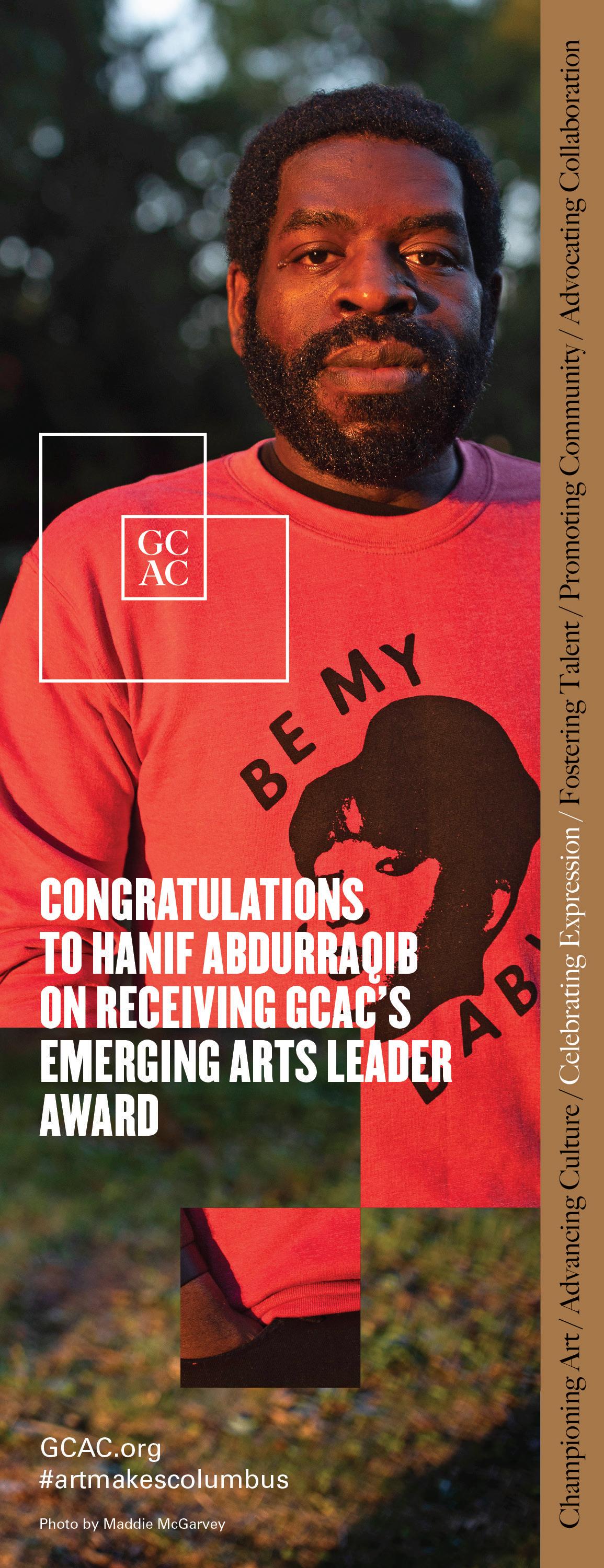
So co-founder Andrew VanderLind understands if there’s a bit of difficulty accepting the fact that, when the company first launched more than eight years ago, it did so from the onebedroom apartment VanderLind shared with his wife, Casie VanderLind.
“I remember we had to move out a dresser to make room for everything,” he said with a laugh.
According to VanderLind, the brand began as a branch-off of an earlier apparel line that the pair created. Casie VanderLind is a cancer survivor, and the duo used the money from their 2014 wedding to start a non-profit clothing brand that was focused on cancer awareness.
The concept was fulfilling for the VanderLinds, and quickly successful (all proceeds were donated to patients who were fighting the disease at the time), but after some time, the gravity of their source material began to take a toll.
How a Columbuscentric clothing brand went from bedroom project to household name in less than a decade


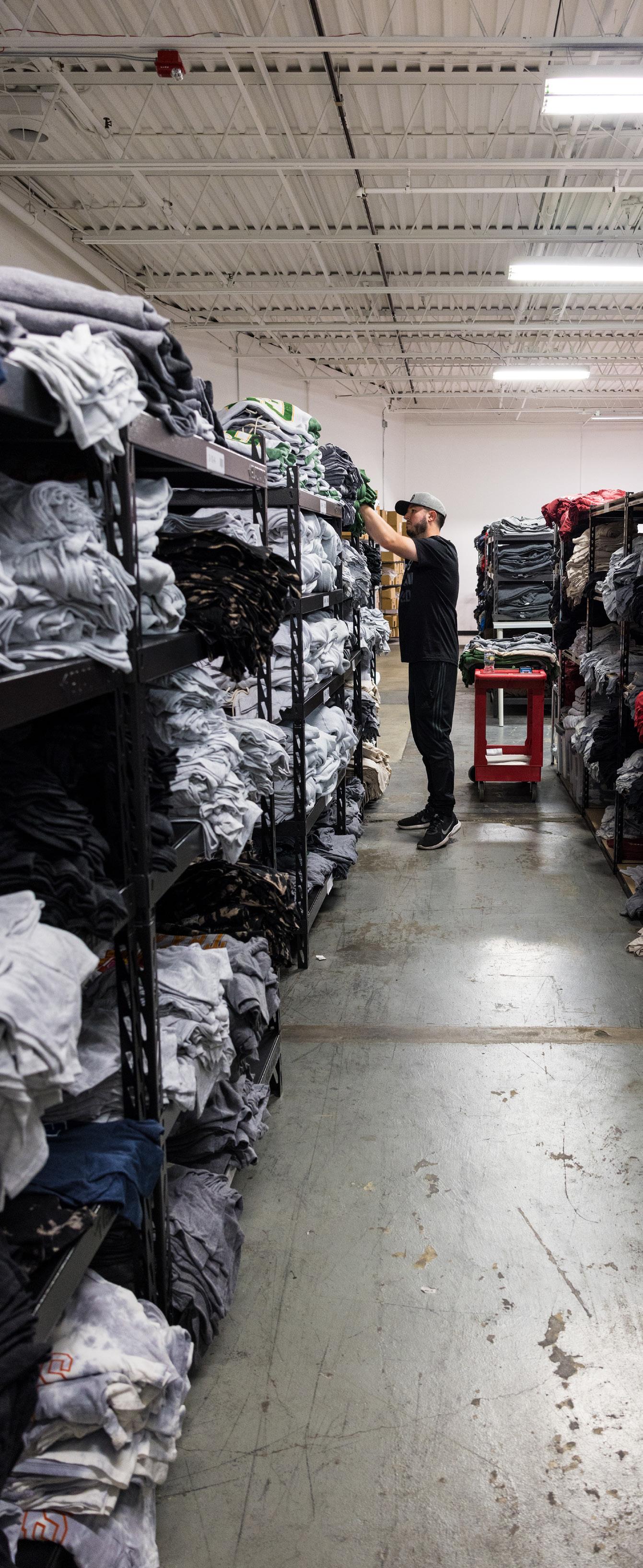
“We loved what we were able to do, but it was really heavy subject matter, day in and day out,” Andrew said. “And by this time, we had learned a lot about apparel, and a lot about what Columbus wanted. So we thought, ‘Let’s make something that celebrates what we love.’”
And that’s exactly what they did. In 2014, with the help of co-founder Ryan Naiper, Andrew and Casie VanderLind officially created Where I’m From, a new clothing line dedicated to the founders’ love of the state they call home: Ohio.
Vintage t-shirts, hoodies and more touting Columbus, Cleveland and Cincinnati are all represented regularly. And while the VanderLinds aren’t forgetting where they started from–and the brand includes plenty of wholly serious designs–they’re also choosing to embrace a lighter, quirkier side with Where I’m From.
Examples include a top-selling hoodie featuring the face of Bengals’ quarterback Joe Burrow donning chic orange shades alongside the text “Joe Brrr,” in addition to a Columbus-themed shirt representing the Clippers’ famous Dime-A-Dog initiative, alongside many, many more.


So many more, in fact, that Where I’m From now offers sizable collections of shirts inspired by seven other states, more than a dozen cities (nine of which are outside of Ohio) and the sports teams that call these places home.
Despite the brand’s expansion, VanderLind said that Where I’m From apparel is produced entirely within the United States, something very few other clothing lines can say for themselves.
“One of the crazier stats we share is that only two percent of the clothing worn in the United States is made here. We’re really proud to be a part of that two percent,” VanderLind said.



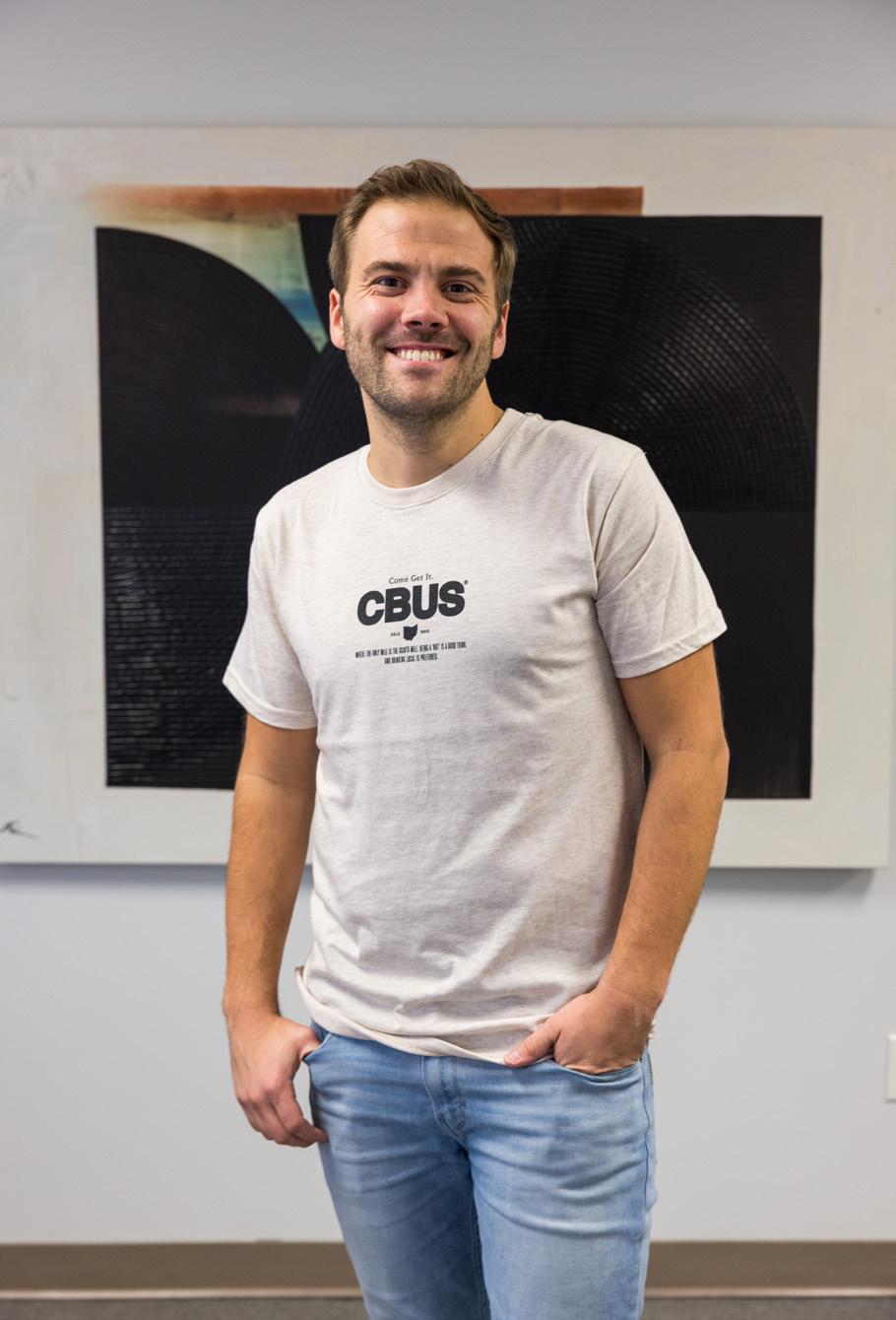
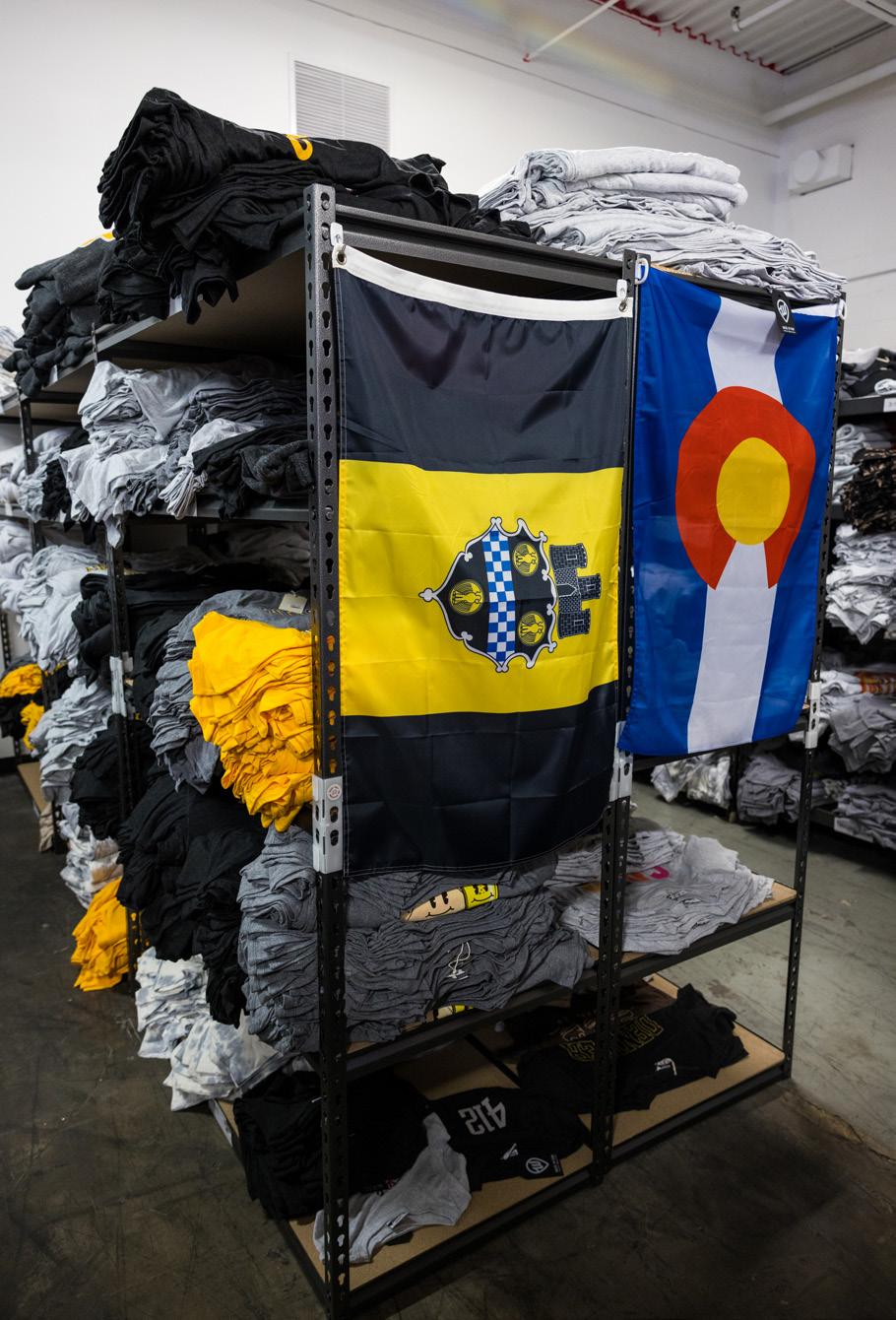
Doubling down on Americanmade goods has more than a few benefits, he added. Not only does it allow the company to sidestep dealing with customs and port holdups, it affords them a closer relationship with their production facilities. This means, if there’s a design tweak they’d like to try with a product, it’s easier to implement. Their all-domestic production even allowed the brand the flexibility to pivot into creating fabric masks for a six-week period during the beginning of the COVID-19 outbreak.
And while all of these are serious benefits, VanderLind says there's one more reason for using for using entirely American-made clothing, and it’s the most important one yet.
“We knew early on we wanted to do this, and a huge part of it is the pride we take in it,” he said. “We’re thinking about the places we call home, it’s in the name of the company. After all, this is where we’re from.
To learn more, visit whereimfrom.com


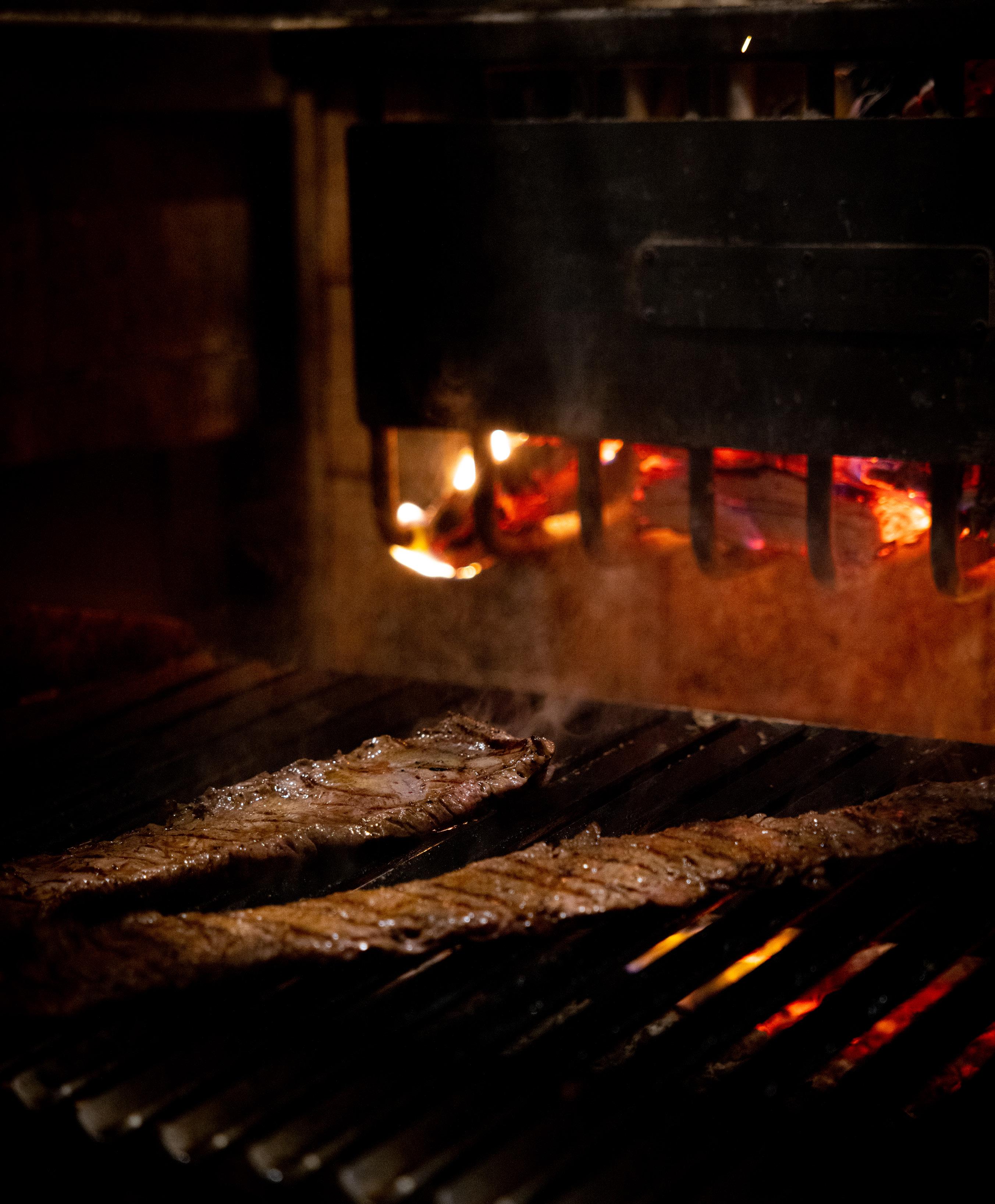 By
By
the new signature restaurant in the Downtown Hilton tower, is heating up the city with Latin-inspired cuisine, wood-fired fare
Executive Chef of FYR, Sebastian La Rocca, said when asked the inspiration behind his dishes. Located in the heart of Columbus inside of the brand new Hilton Columbus - Downtown hotel tower, FYR is a new eatery inspired by both his Latin American roots as well as the age-old tradition of live-fire cooking.
La Rocca brought a Latin American culinary flair to Central Ohio through his own recipes: dishes uniquely inspired by his travels and signature family recipes. Columbus has leveled up its dining game in recent years, with the Short North and Downtown becoming the hottest destinations for new restaurants. La Rocca saw an opportunity to step outside the box and create a unique experience for Columbus foodies, and that’s exactly what he’s done.

With the name FYR, La Rocca connects with his Argentinian roots, where woodfired cooking is foundational. “My people have been cooking over open fire since the beginning of time. It’s in my blood. It’s in my DNA. Creating food that attaches me to my roots and sharing those experiences with the people of Columbus is a blessing,” he said. “I always say, I am not a chef—I am a storyteller. When asked to bring that story to Columbus, it was something I knew I had to do. I love the city. I love the people. I love the Midwestern spirit.”

One FYR staple is its Grilled Bone Marrow, made with sea urchin, pangratto and herbs. Every ingredient at the restaurant is locally-sourced from nearby farms and bakeries. A common denominator in La Rocca’s cooking is his use of family recipes. From his grandmother’s “amazing pickles” and empanadas, to her delectable caramel flan, guests have the chance to experience authentic Latin American fares with an around-the-world twist.
“I think the most important quality of a great chef is the ability to elevate a single ingredient with few additional ingredients,” he said. "Cooking does not need to be complicated. Finding a few ingredients that work well together that ultimately better the original taste, is the key to a great dish.”

"If you want to know me, try my food.”

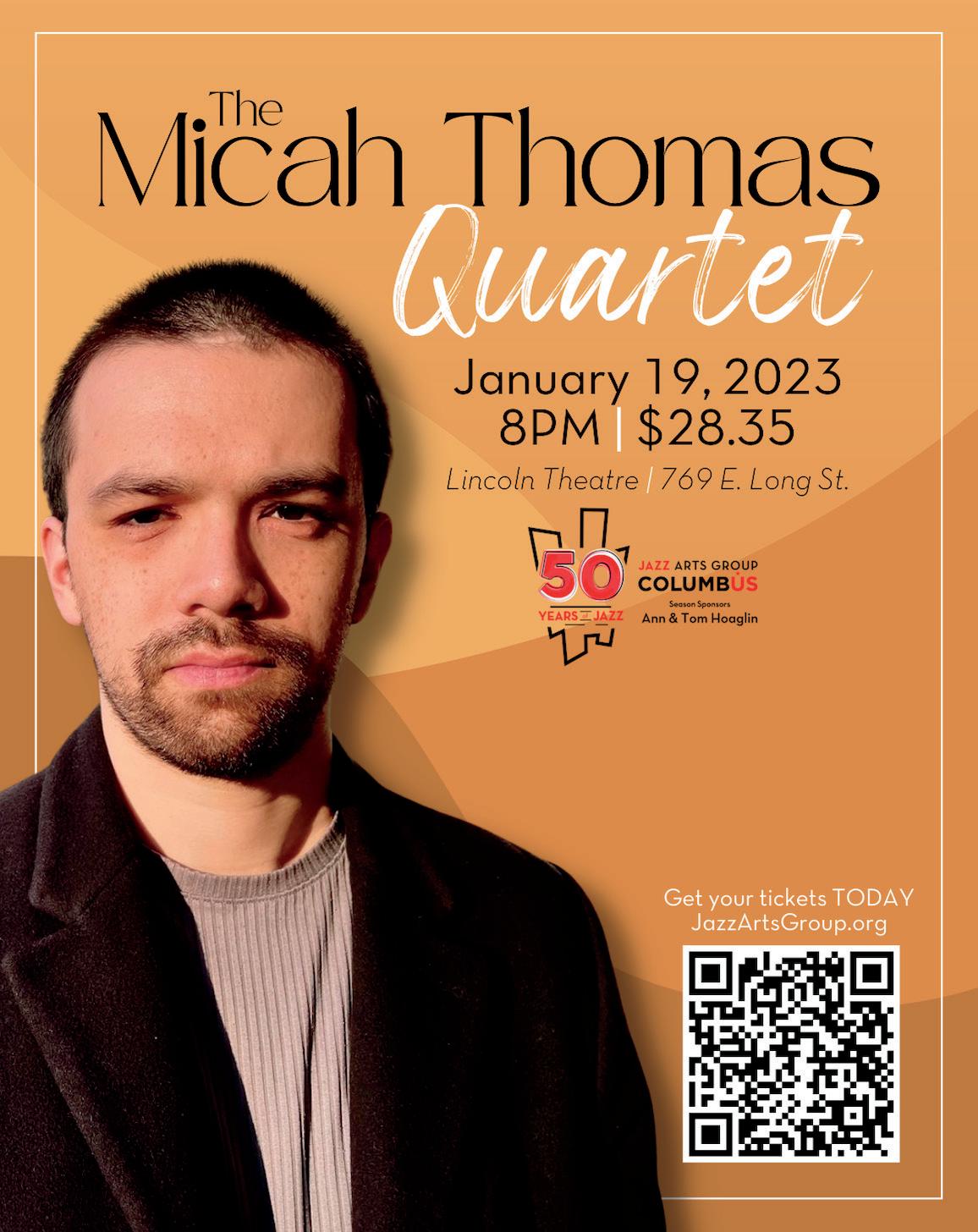

In La Rocca’s signature starter, the Wood-Oven Roasted Tomato, this element of his cooking shines through. The roasted tomato is served at room temperature and topped with goat cheese, charred onions and panela honey–just four ingredients.
Part of the reason Columbus was a no-brainer for La Rocca, the international chef said, was because of the Midwestern love for barbecue.


La Rocca noted that he is inspired by the myriad of flavorful, unique barbecue dishes that Midwesterners have perfected, and he knew his cooking techniques would be welcomed with open arms.

FYR uses six different woodfired techniques to cook ingredients, including wood-fired grill, wood-fired oven, indirect heat, rescoldo, smoking and direct embers. Rescoldo is a method of cooking where ingredients are cooked under a blanket of hot embers, traditionally used in Latin American cooking, enhancing flavors with a smokey taste. One of the restaurant’s flagship dishes, cured duck breast, is cooked with three of the six wood cooking methods; indirect heat, smoking and direct ember cooking. All wood used at FYR is sourced locally from Arctic Hardwoods in Kingston, Ohio.

Food is not the only thing that FYR excels in—their signature cocktails have taken the Columbus craft cocktail scene by storm as well, serving up cultural takes on mixological classics; the old fashioned, gin & tonic and more.
Rustun Nichols, Beverage Director at FYR, says their Chef de Tornade is a town favorite. “The Chef de Tornade is a Latin American take on an old fashioned. Made with Reposado Tequila, Mezcal, Banana deu Bresil, agave syrup and cardamom bitters, the Chef de Tornade is named after the guy in the kitchen that can do everything–the relief chef.”



Nichols explained that high acidity and funkier tones were priorities when creating the cocktail menu. “We wanted our drinks to encourage people to have a bite to eat with it. Eating Latin American cuisine, you tend to see bitter, funkier flavors. We wanted our cocktails to reflect those same flavors while also making a great pairing with some of our signature dishes.”
FYR doesn’t stop with only food and drink–the restaurant excels at making guests feel transported from the moment they walk in the door. “As a chef, our job is to give an experience - not just a tasteful dish. For me, that includes everything from the moment you walk into a restaurant to the moment you leave. Service, food, ingredients, music, lighting and atmosphere all play into the making of a successful restaurant,” said La Rocca.
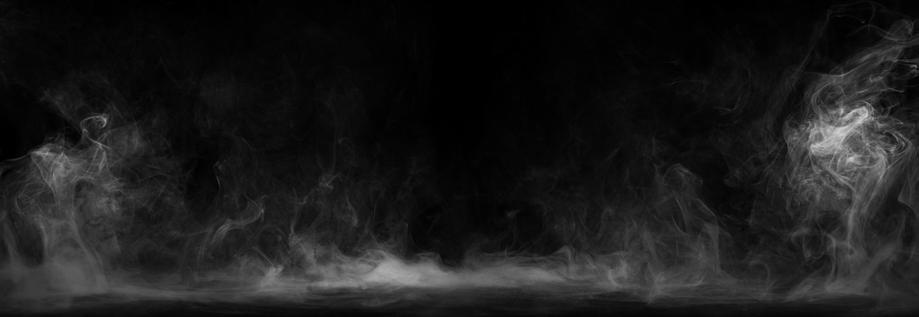
From the use of wood furniture to darker, romantic lighting, FYR gives guests a break from the classic Columbus brew house scene and offers a truly unique dining experience.
In true storytelling fashion, La Rocca and his employees can be found chatting up the guests about the inspiration behind certain dishes, drinks and the restaurant as a whole. They are all truly inspired by the story and find themselves relating to each one that La Rocca tells in his cooking. FYR is a culinary tale Columbus never knew it needed, but we are fortunate to read it. →
To learn more, visit www.fyrshortnorth.com




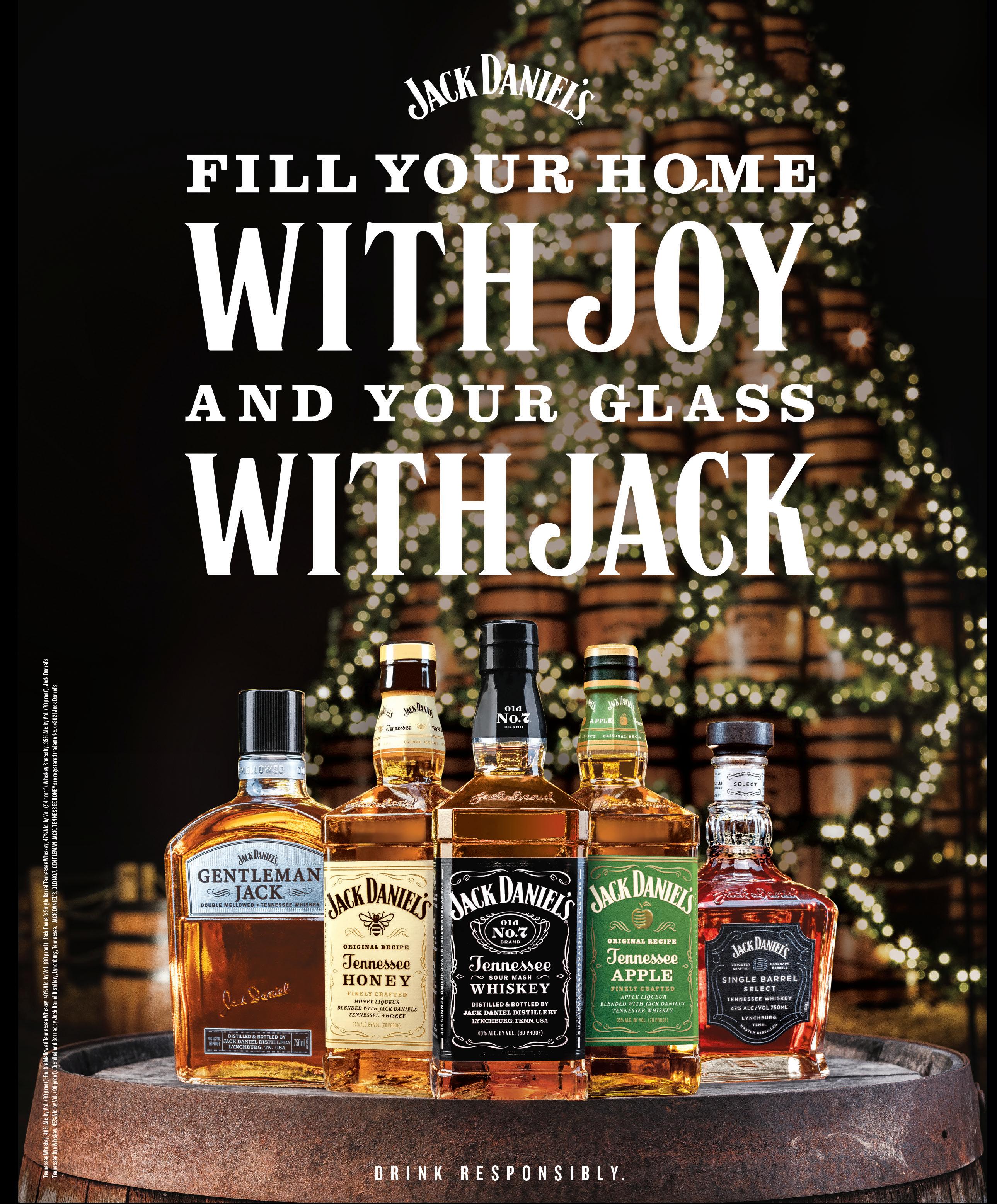
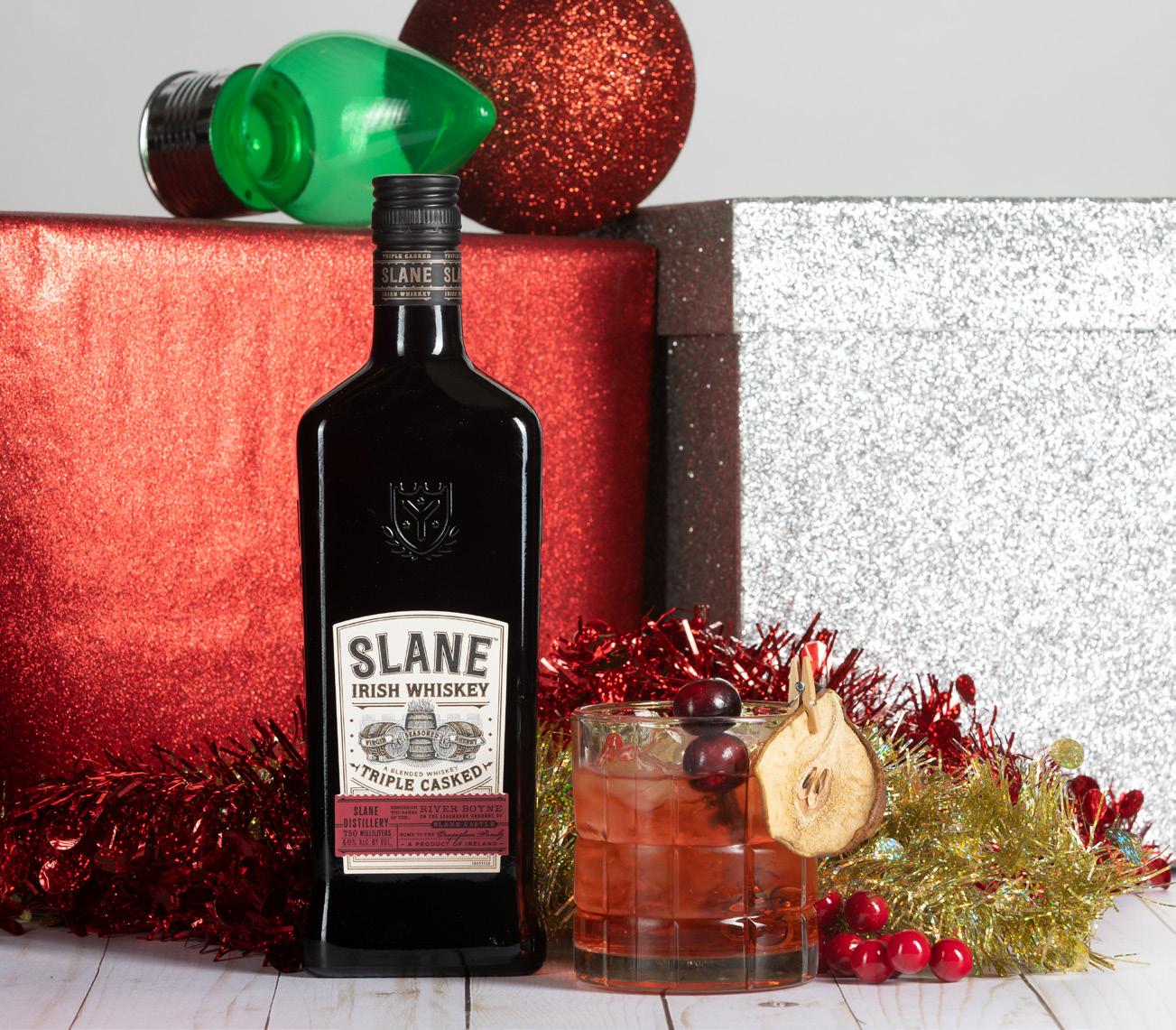


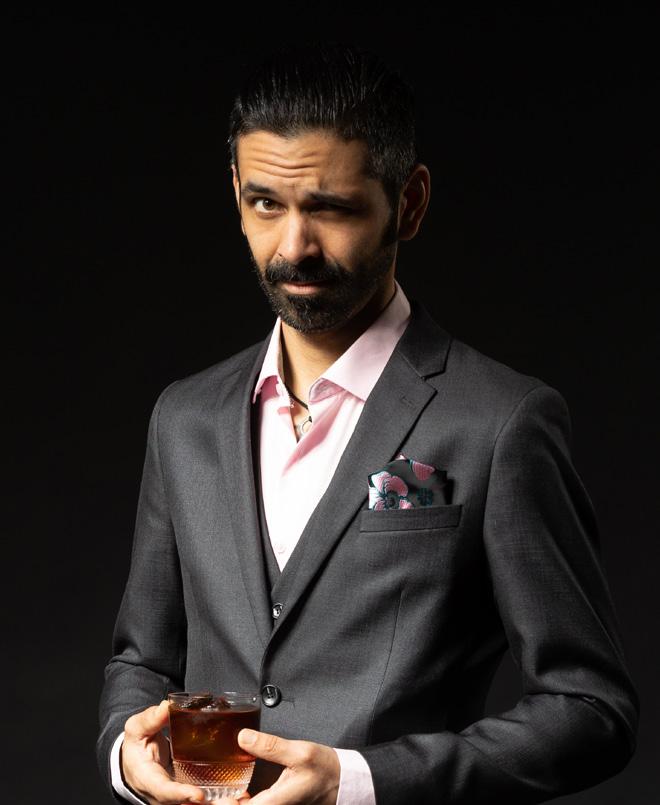

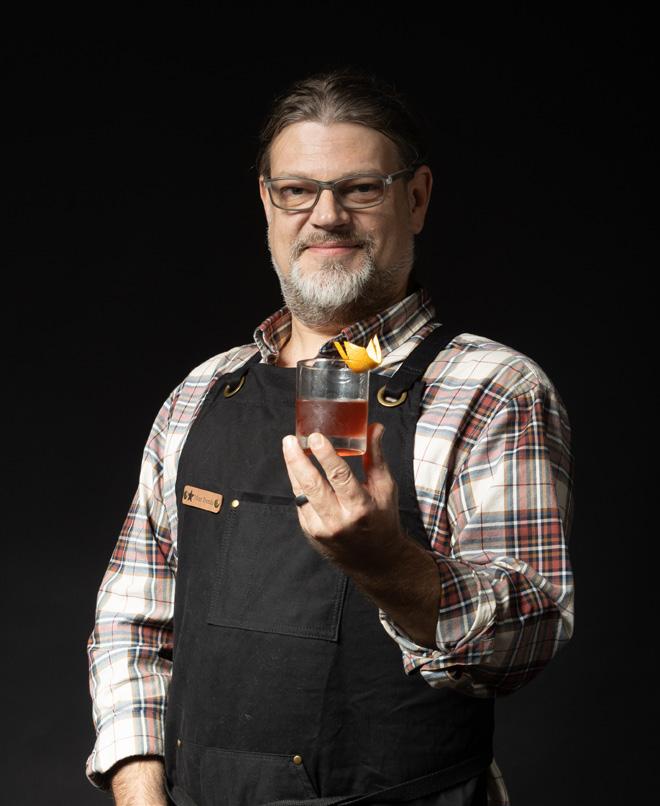

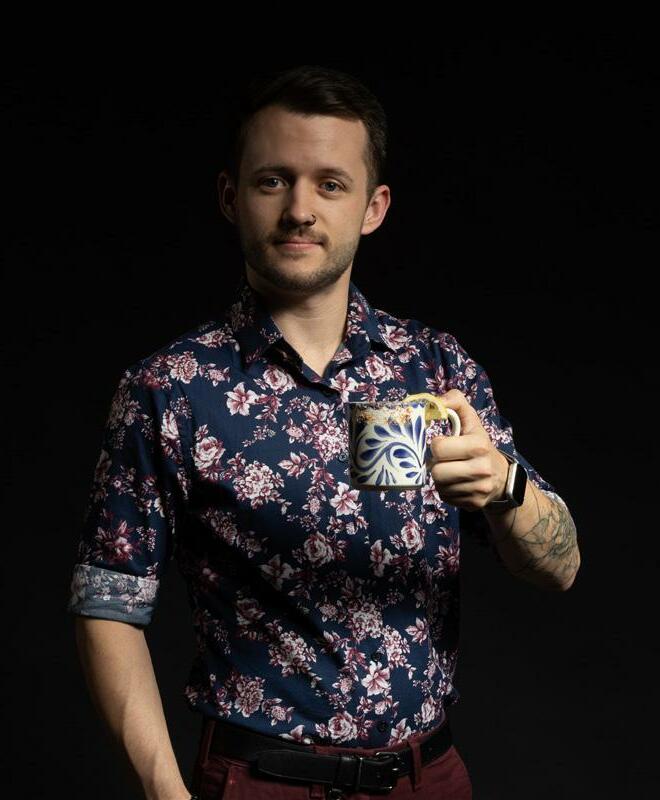

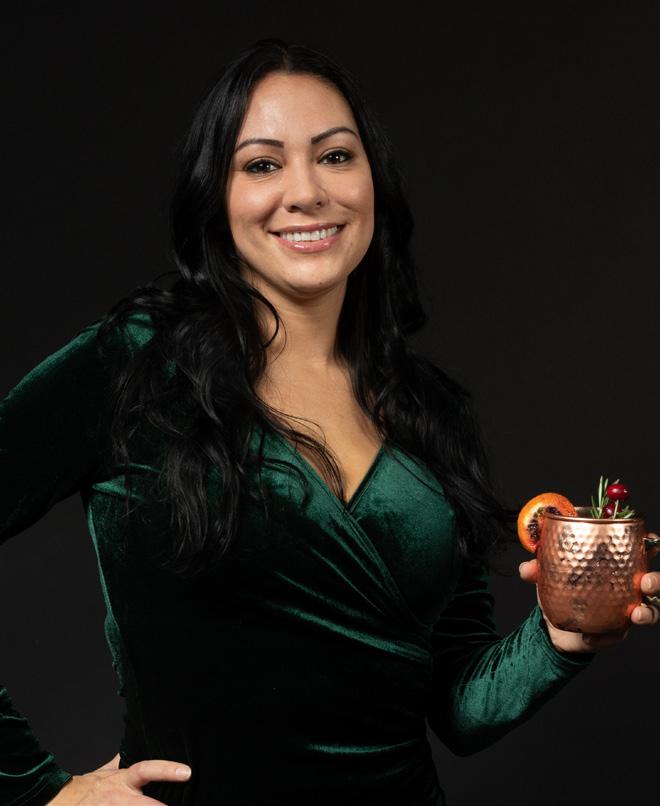

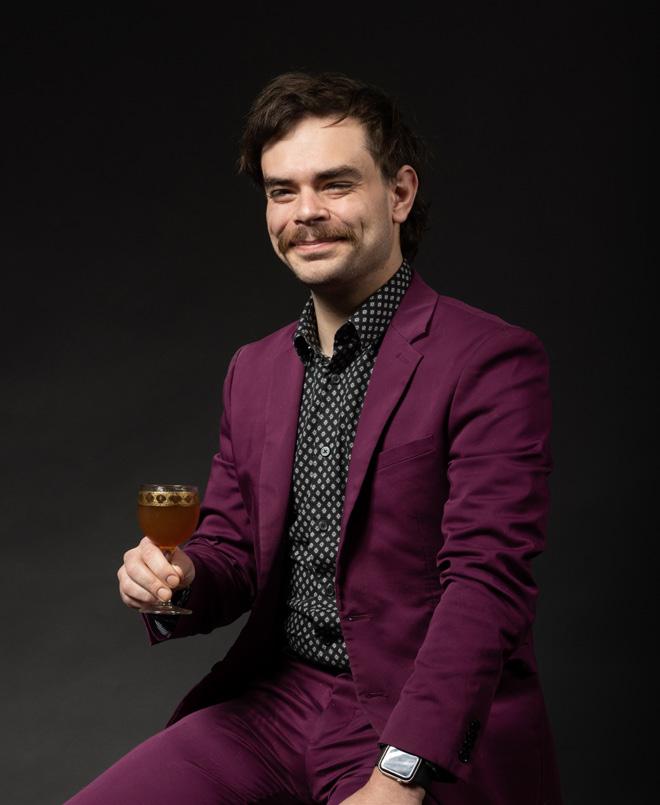
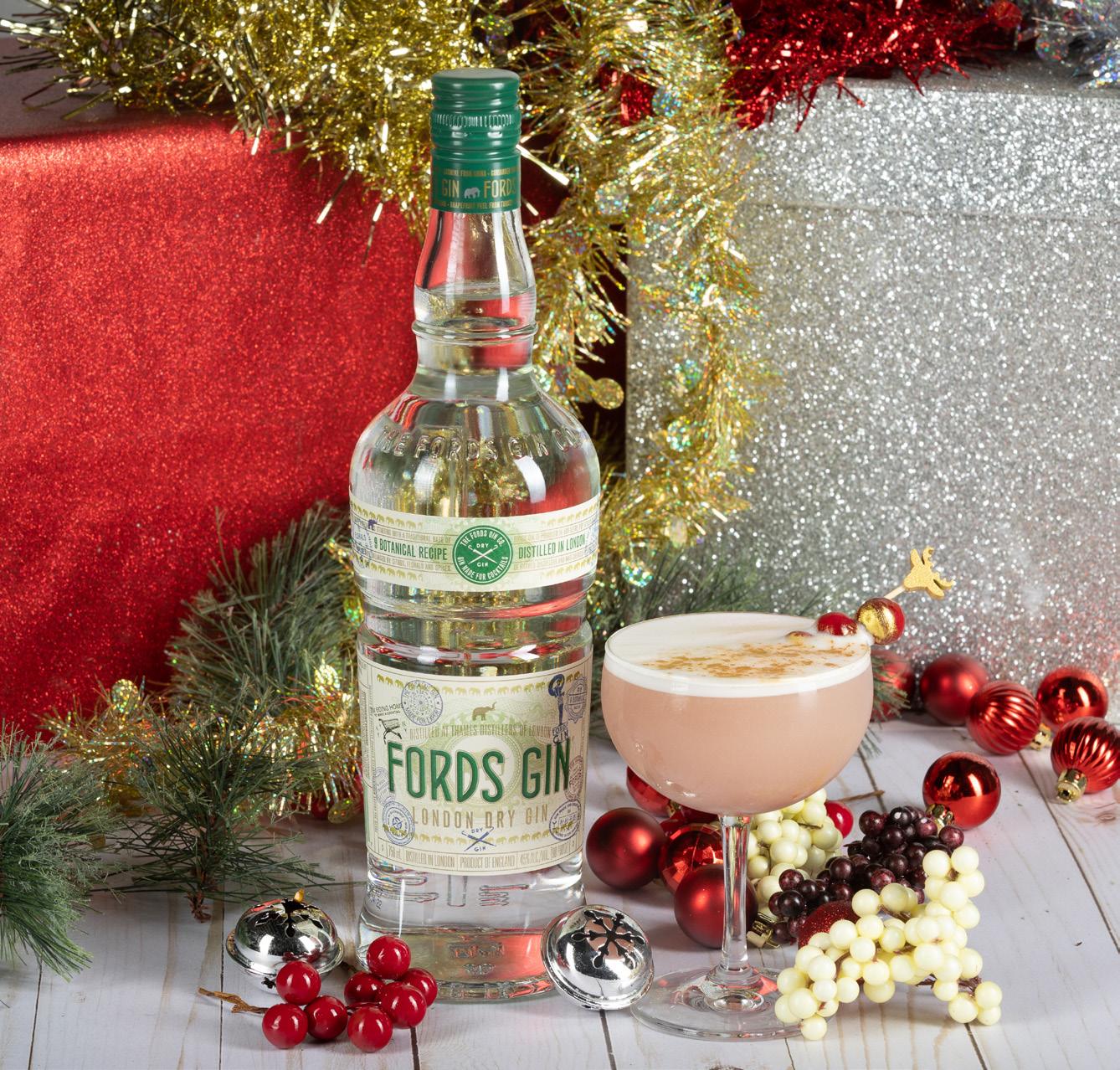
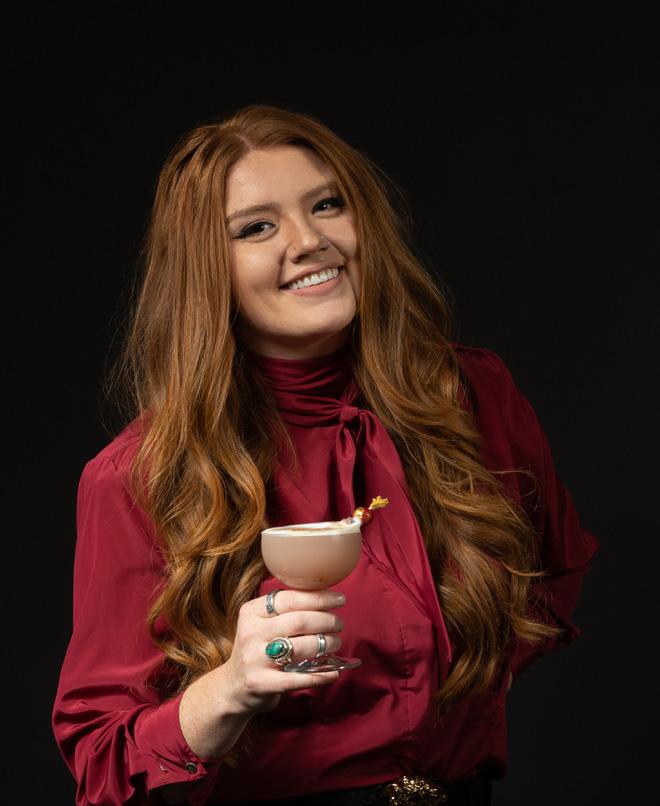
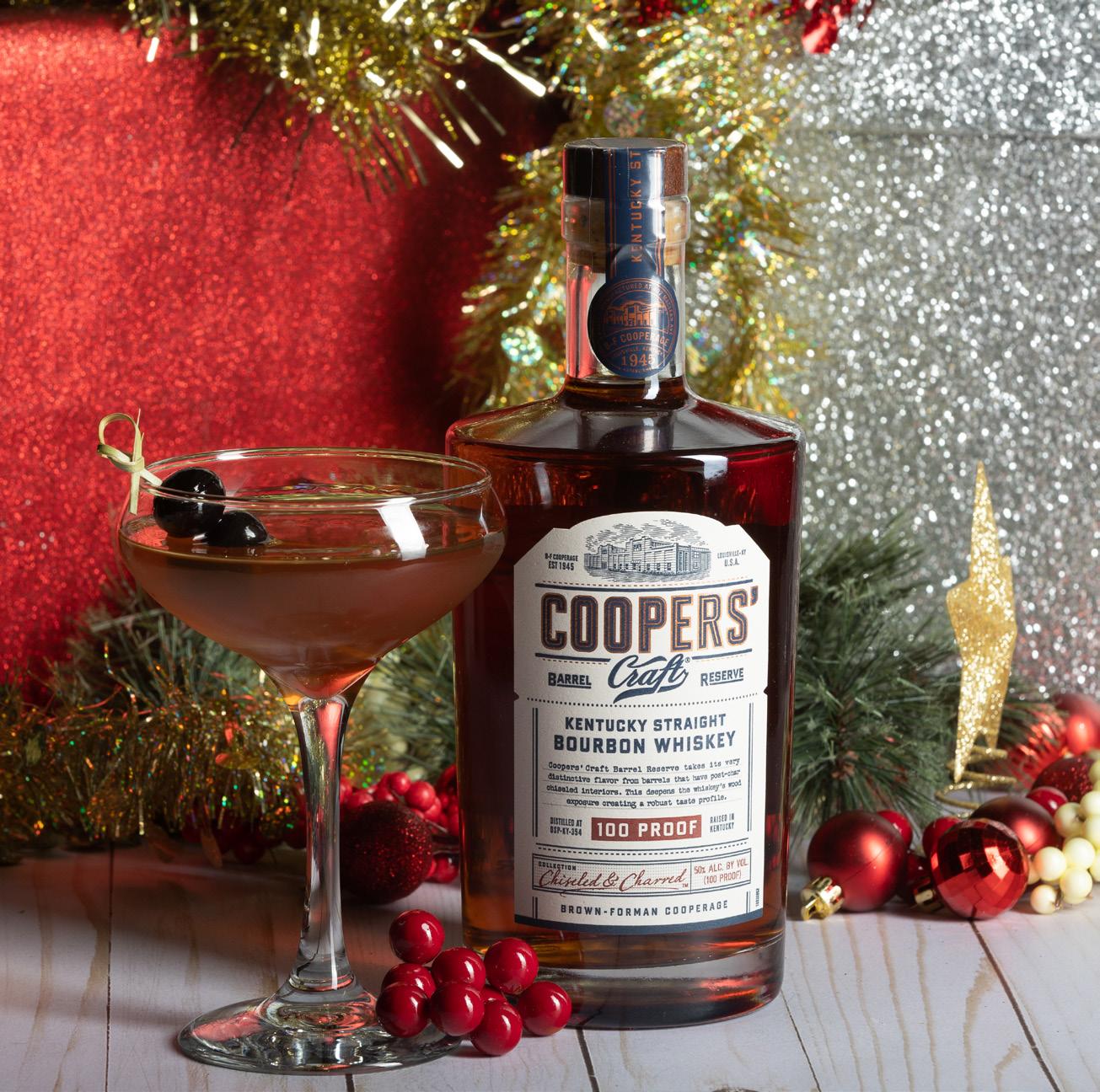
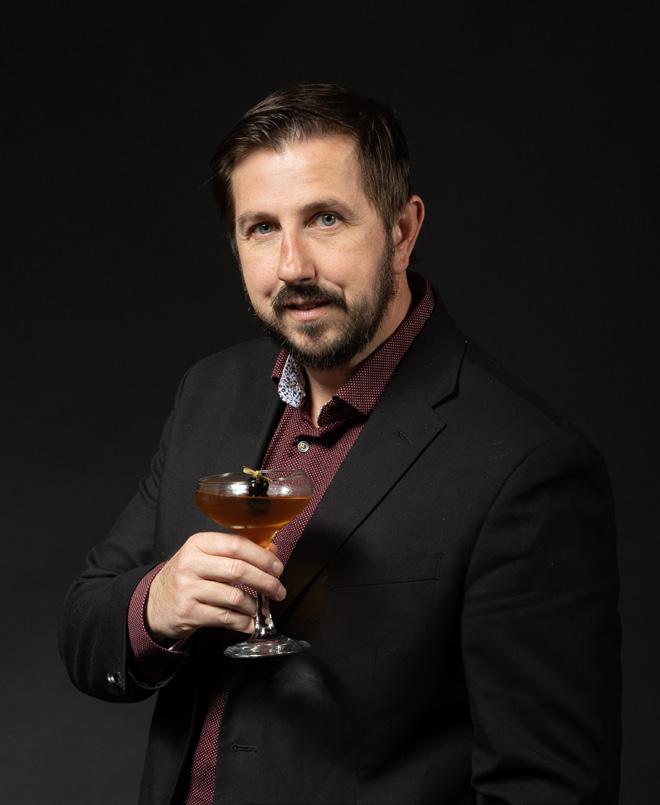
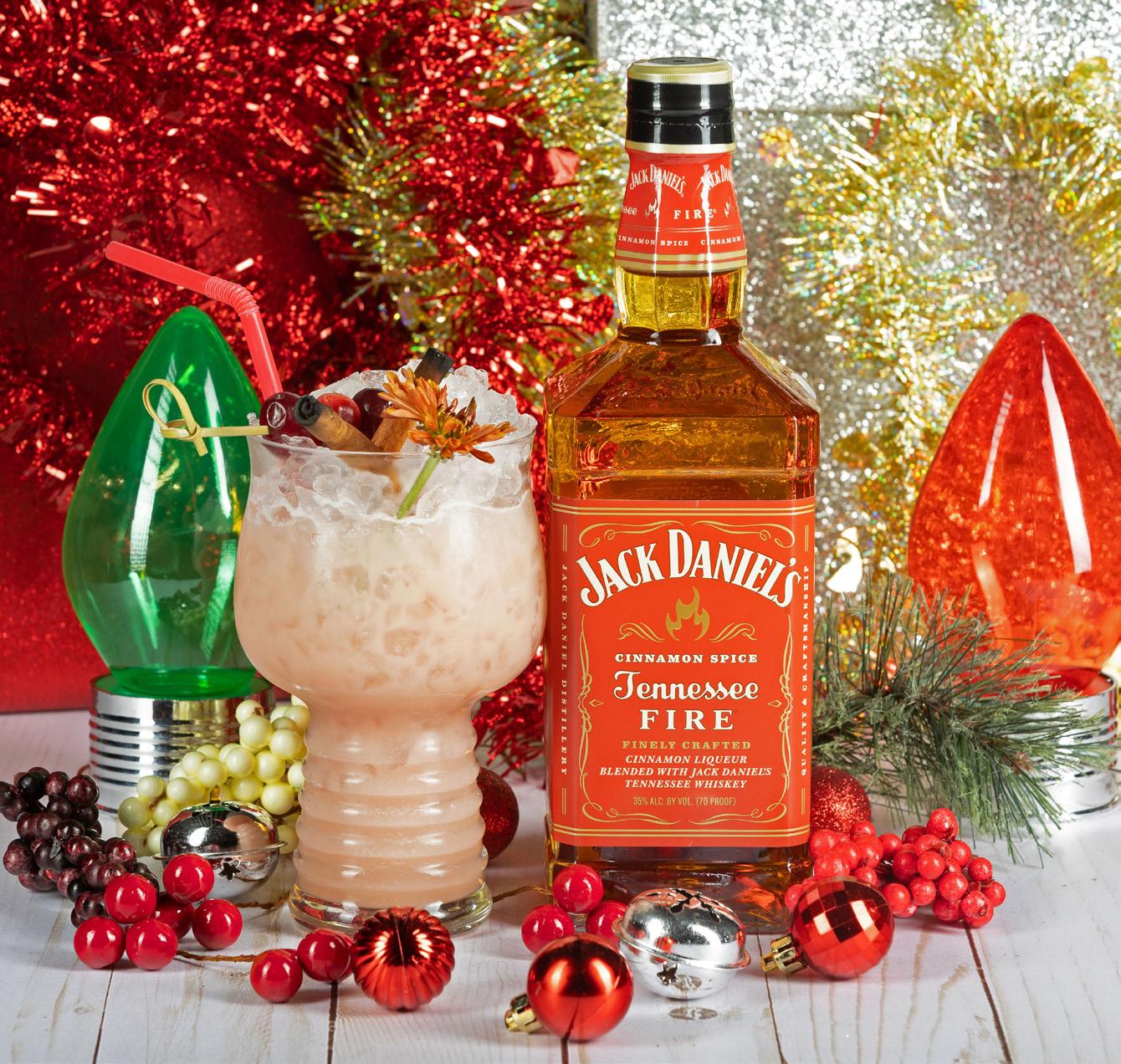


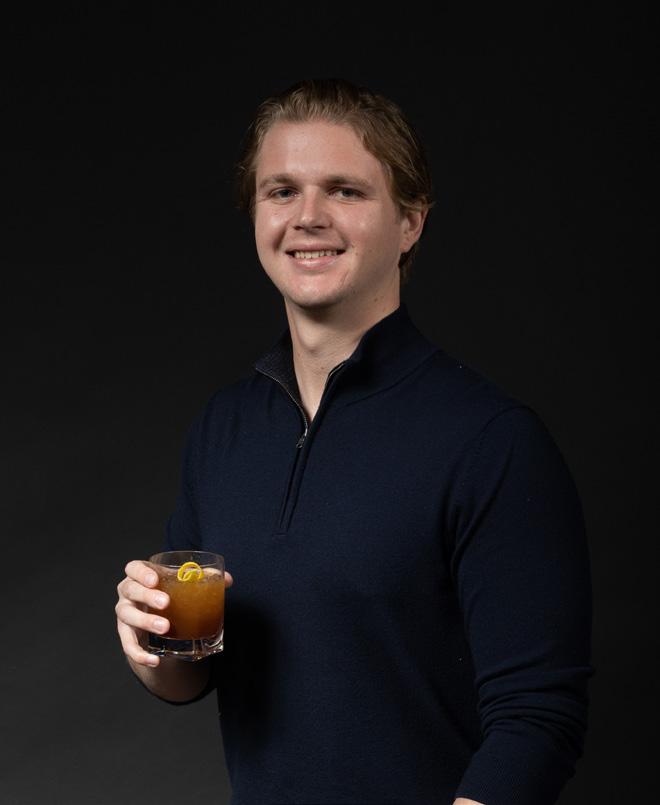
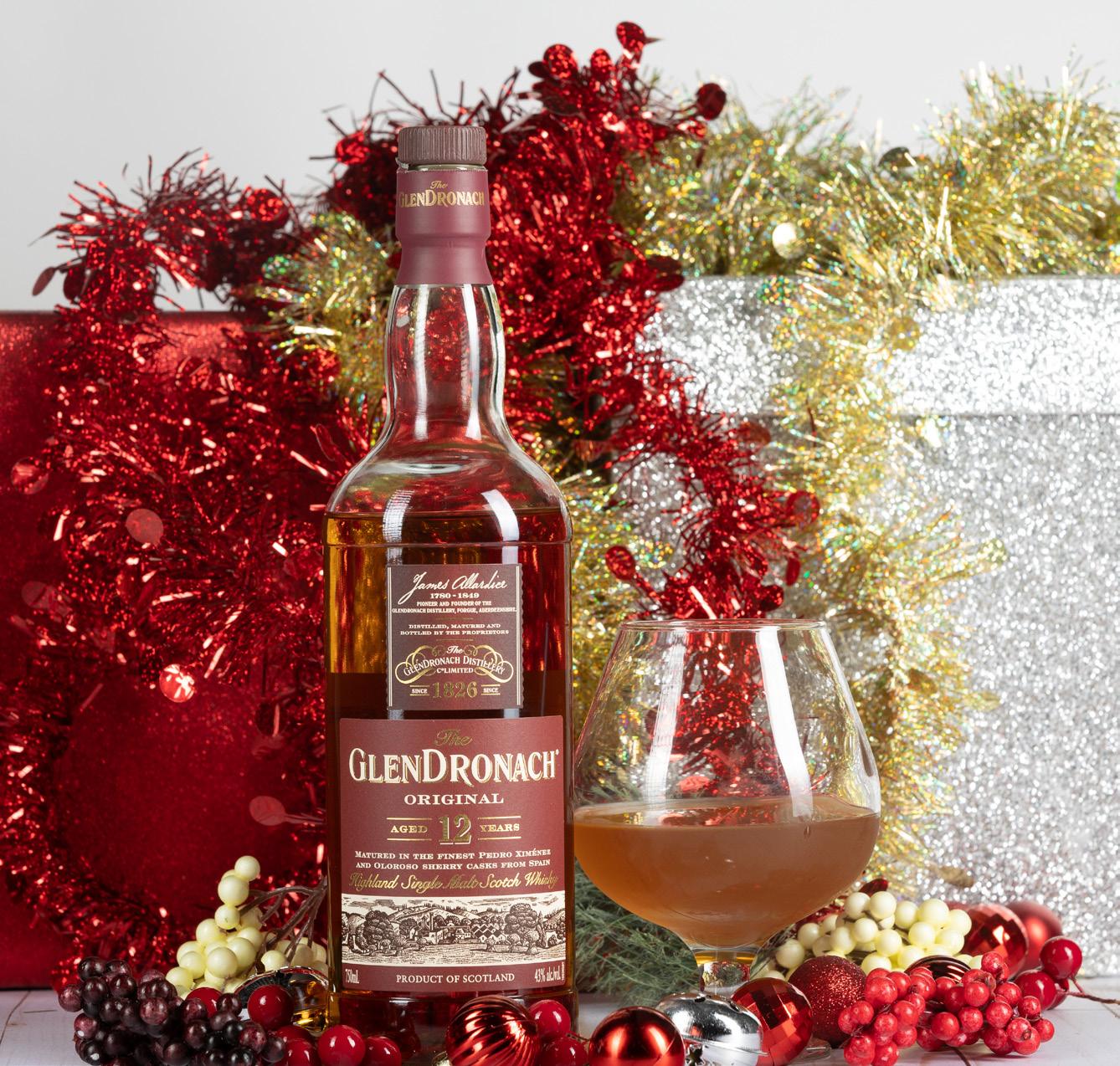
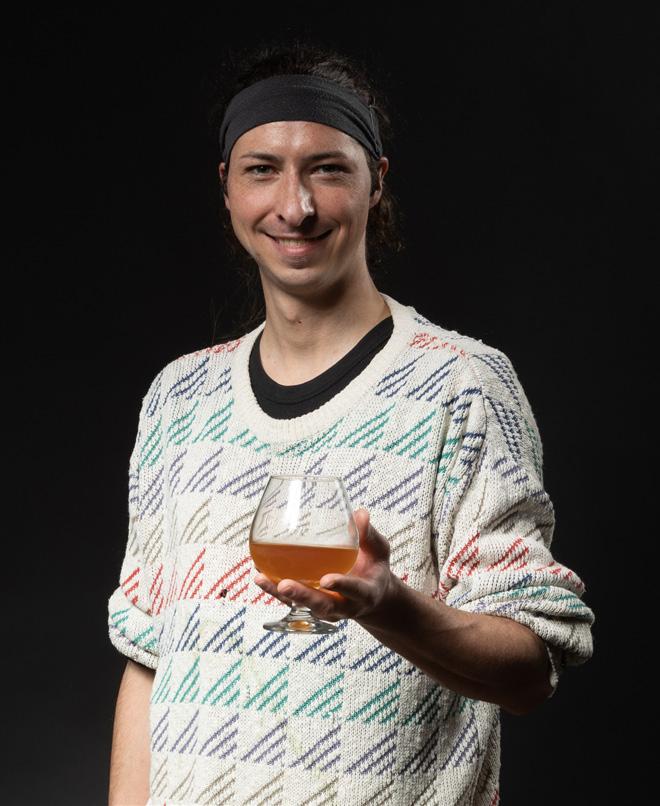

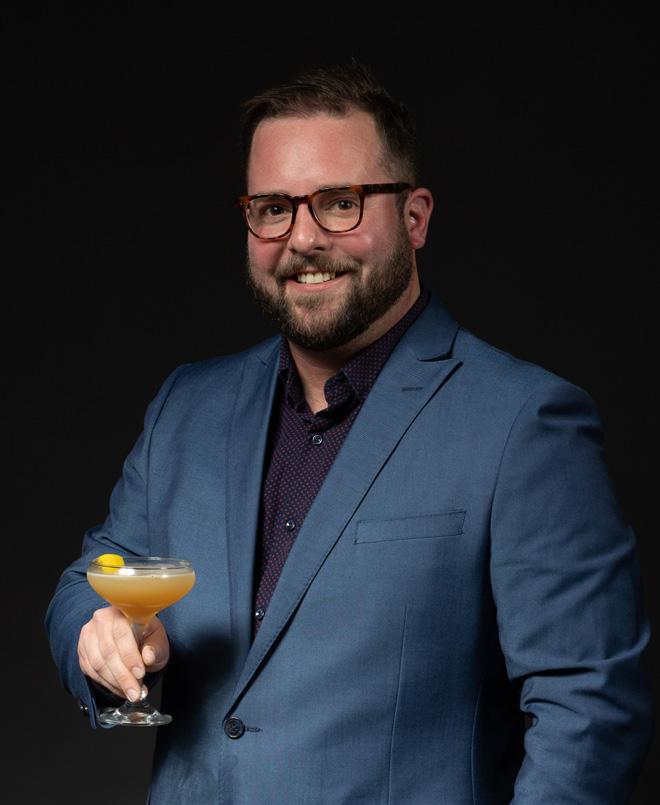



From a Columbus amusement park to Judy Garland joining a frat, we dive into five of the city’s most fascinating tales that time forgot
Section Design by Bryce PattersonWhat do we think about when we think about Columbus?
Maybe it’s the iconic and ornate LeVeque Tower, or the massive Ohio Stadium, a constant and enormous reminder of the Buckeyes’ generational success. Maybe it’s something smaller, like the marquee sign outside of Buckeye Donuts, or a quiet Clintonville backyard in the fall.
These are all acceptable answers, but we’re here to help you look a little deeper. Because our city is full of fascinating stories that–unless
they were documented–you probably wouldn’t believe, like the time 19th century Columbus-area settlers took down nearly 20,000 squirrels in a single day, or when Bexley resident Jerrie Mock became the first woman to fly solo around the world in 1964.
In the cover section of our December 2022 issue, Columbus historian John M. Clark dives into these stories and more, recounting five of the city’s most fascinating and under-appreciated tales. →
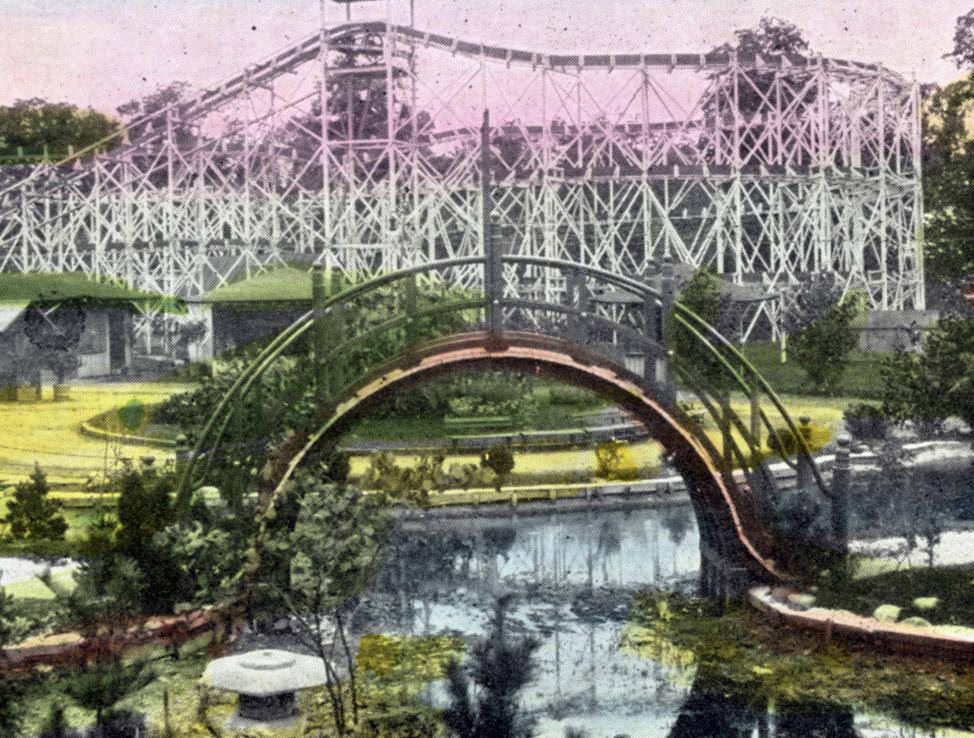
If you want to lose yourself in the excitement of a world-class amusement park, you can drive to Lake Erie for Cedar Point or to Cincinnati for Kings Island. But in the early years of the 20th century, you could have found the biggest and best amusement park right here in Columbus – between North High Street and the Olentangy River.
An entrepreneur named Robert Turner set the stage for this amazing place in 1893 when he opened The Villa, which featured boating, swimming, picnic grounds and a tavern. In 1896, the Columbus Railway and Light Company bought the property, hoping to increase ridership on its High Street trolley line. But it would be another three years before brothers Will and Joe Dusenbury bought the property and christened it Olentangy Park, ushering in an era of growth and popularity.
Focusing on the area as a weekend and summer destination, the brothers soon built a large performance theater, added a few other attractions and expanded boating facilities along the river. And that was just for starters. The next two decades saw the addition of two roller coasters, the country’s first “Loop-the-Loop” ride, a “Tunnel of Love,” the towering “Shoot-the-Chutes” water slide, a Ferris wheel, an amphitheater, small zoo, picnic grounds, playground equipment, rifle range, ballroom and a canoe club, where visitors could rent small boats and paddle along the Olentangy River. →

Sporting the country’s first “loop-the-loop” ride, Olentangy Park is a world class-amusement park you’ve never heard of



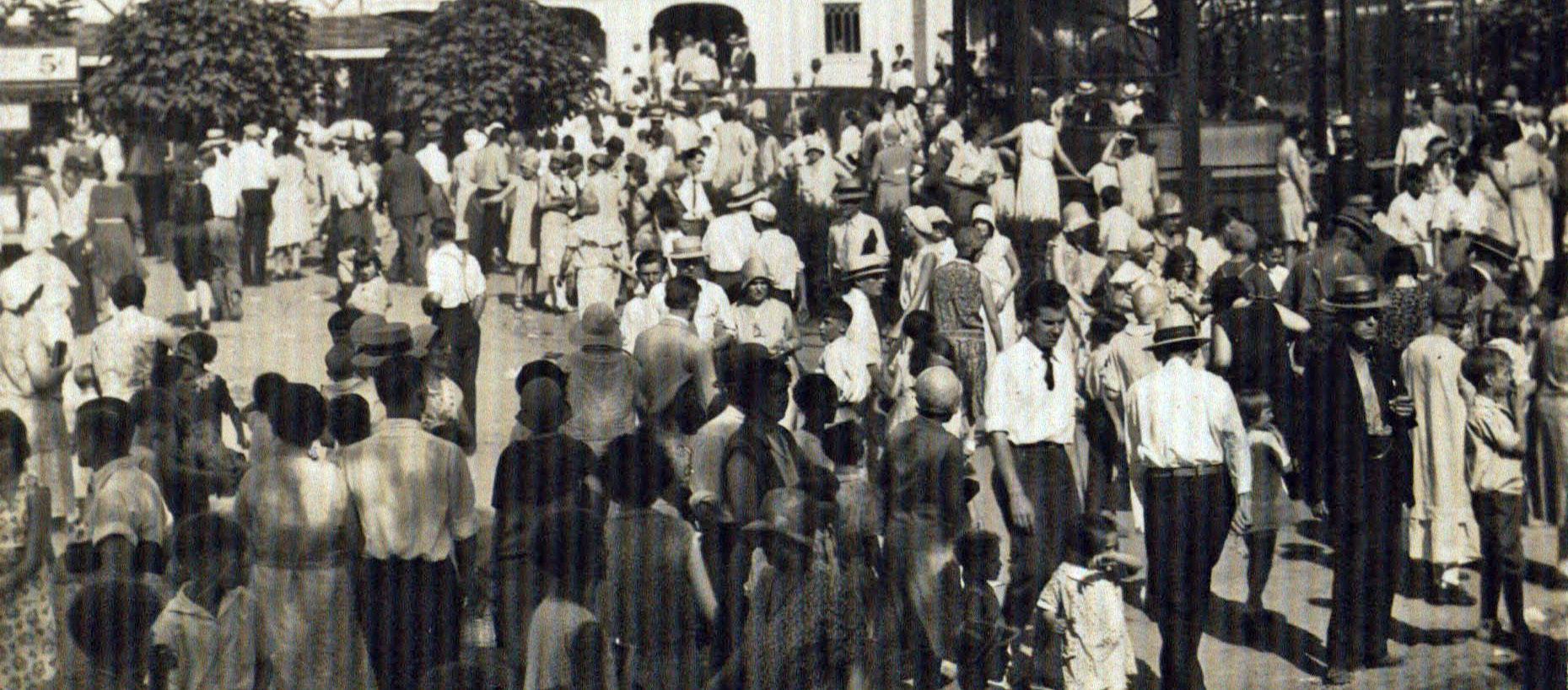
A spacious dance hall attracted the nation’s most popular bands, like the Glenn Miller Orchestra and Tommy Dorsey. And at night, the entire park was illuminated by the glow of 30,000 electric lights.
Olentangy Park and others like it across the country weren’t strictly for entertainment. In their time, they also educated visitors. One of the more-bizarre attractions at the Clintonville park was the equivalent of a modern-day neonatal intensive care unit, where park-goers could observe premature babies in newfangled machines called “incubators.”
When the 1904 St. Louis World’s Fair closed, the Dusenburys bought the expo’s Banzai Bridge, tea house and other buildings from its Japanese exhibit. About 40 Japanese workers came to Columbus to re-erect the exhibits. About half of these workers stayed to operate them and entertain park guests. Staged sword fights proved to be popular, as was the Japanese restaurant.
The 1920s saw the construction of a swimming pool that could accommodate hundreds of swimmers at one time. It featured “filtered water,” a diving board, waterfall and tiered seating for spectators. Sand was trucked in from Lake Erie to give the place a true, “beach-like” feel. Bathers could even rent swimsuits so they didn’t have to take their own.
Olentangy Park grew to 100 acres and remained popular into the mid-1930s, attracting up to 40,000 guests a day. But then, the Great Depression hit and attendance dropped at Olentangy and similar amusement parks across the country – including at the lesser-known cross-city rivals Minerva and Indianola Parks. In 1937, the Dusenbury brothers sold their holdings to businessman Leslie Leveque, who would later become co-owner of the tallest building in downtown Columbus. He cleared the site and replaced the park with Olentangy Village, a large apartment complex that exists to this day.
Very little remains of the original amusement grounds. For a while, a portion of the old swimming pool was used at the new apartments. But the 1914 merry-go-round later received a million-dollar facelift and, to this day, gives rides to excited, young visitors at the Columbus Zoo.
To read more stories like this, check out John M. Clark's book, "Columbus Uncovered"

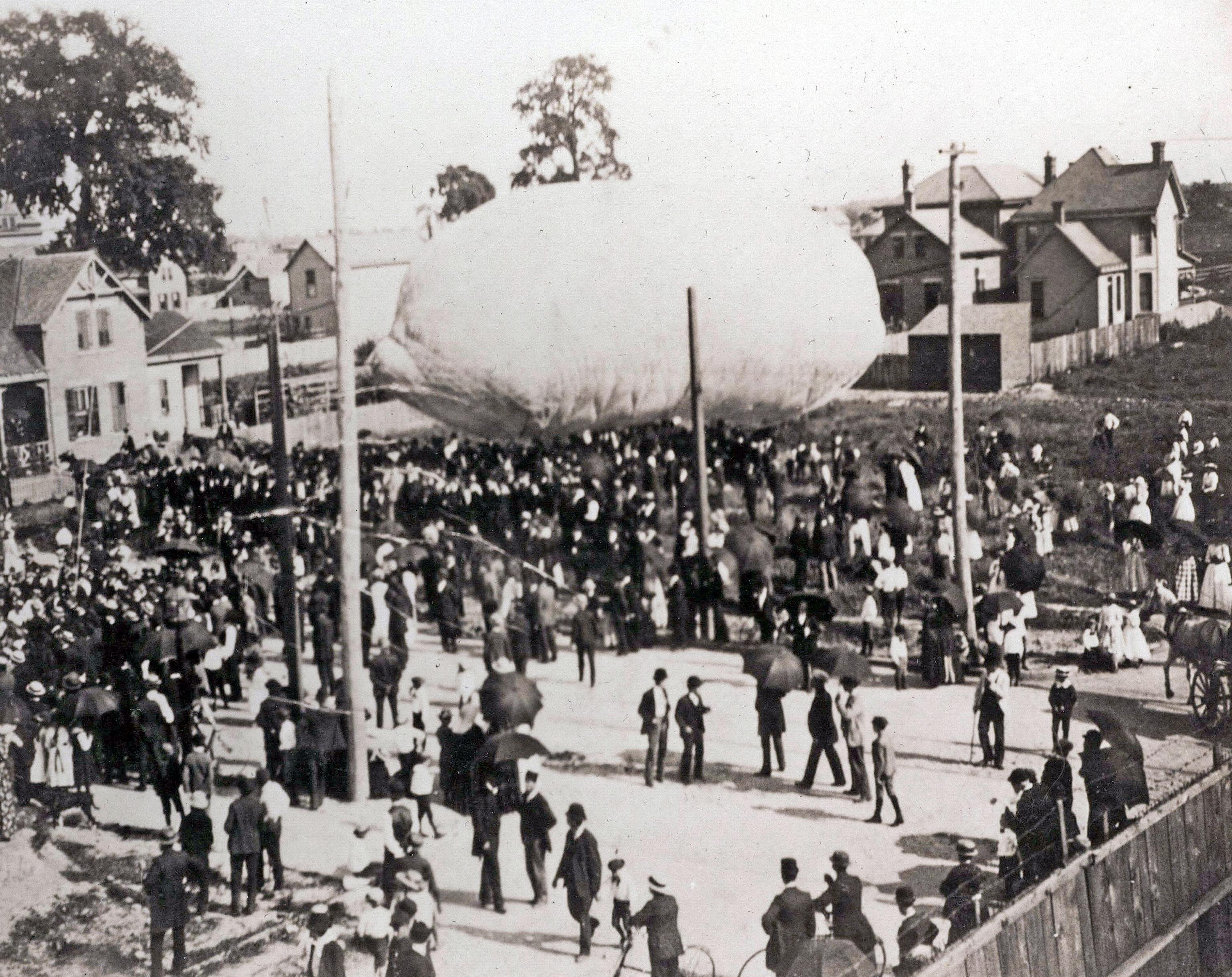
t was a hot, muggy, June afternoon, and spectators were dressed in their Sunday finest – which, in 1891, meant stuffy, three-piece suits for the men and boys and ankle-length dresses and petticoats for the women and girls. Maybe the heat got to them. Or, perhaps, it was the hours-long wait. Or the fact that each had paid a hefty 25 cents to watch an airship demonstration that failed to produce.
I

At any rate, it didn’t take much for the crowd – estimated at between 500 and 2,000 – to rush from the grandstands at the East Whittier and Jaeger Street base ball park and hack the balloon to pieces. Only with a measure of luck did the airship inventor and his pilot escape with their lives.
It had been billed as the first ascension of a controlled, passenger-carrying balloon in Columbus. So, naturally, the crowd was excited. Then, there was the well-known story of the inventor, a former jewelry store owner from Brooklyn who called himself “Professor” Peter Campbell. Just two years earlier, Campbell had been at the center of a tragic story that made national headlines when parts of one of his earlier airships had fallen into a Brooklyn homeowner’s front yard. Without means of controlling the 30-foot-by-50-foot, gasfilled balloon, Pilot Edward D. Hogan was carried on the winds – out to sea – never to be seen again. Maybe the Columbus crowd had hoped to be spectators to another disaster.
Little is known about Campbell’s work between 1889 and 1891, but he didn’t give up on his controllable balloons. It also isn’t known what prompted the professor to bring another ship and pilot to Columbus in 1891. It’s a fair guess to say he was on a multi-city tour aimed at rebuilding his reputation. →
When Columbus residents in 1891were promised an airship show that wasn’t delivered, they took matters into their own hands

The large base ball field (“baseball” was spelled as two words back then) seemed like the perfect launch site. There were to be two demonstrations of the airship Mercer that day – the first at 2:30 p.m., the second at 4. 2:30 came and went, with the Mercer and the professor nowhere to be seen. But as reporters later wrote, most were determined to sweat out the next hour-and-a-half under the broiling sun for what had been billed as the second show.
When 4 o’clock came and went with no sign of the giant ship, the crowd began to grow restless. Shouts of “Fake!” and “Swindle!” could be heard from the audience, along with a few calls for the return of their admission. But spectators were calmed somewhat when they spied dozens of men dragging a giant, uninflated balloon into the field from an adjoining lot. From then, the pace quickened. A trench was dug, from which Professor Campbell and the unidentified pilot tapped into a city gas main. Slowly, the balloon filled and stretched toward the sky, held in place by ropes tied to the passenger car, beneath. The pilot wasted no time climbing into the car and preparing for the flight.
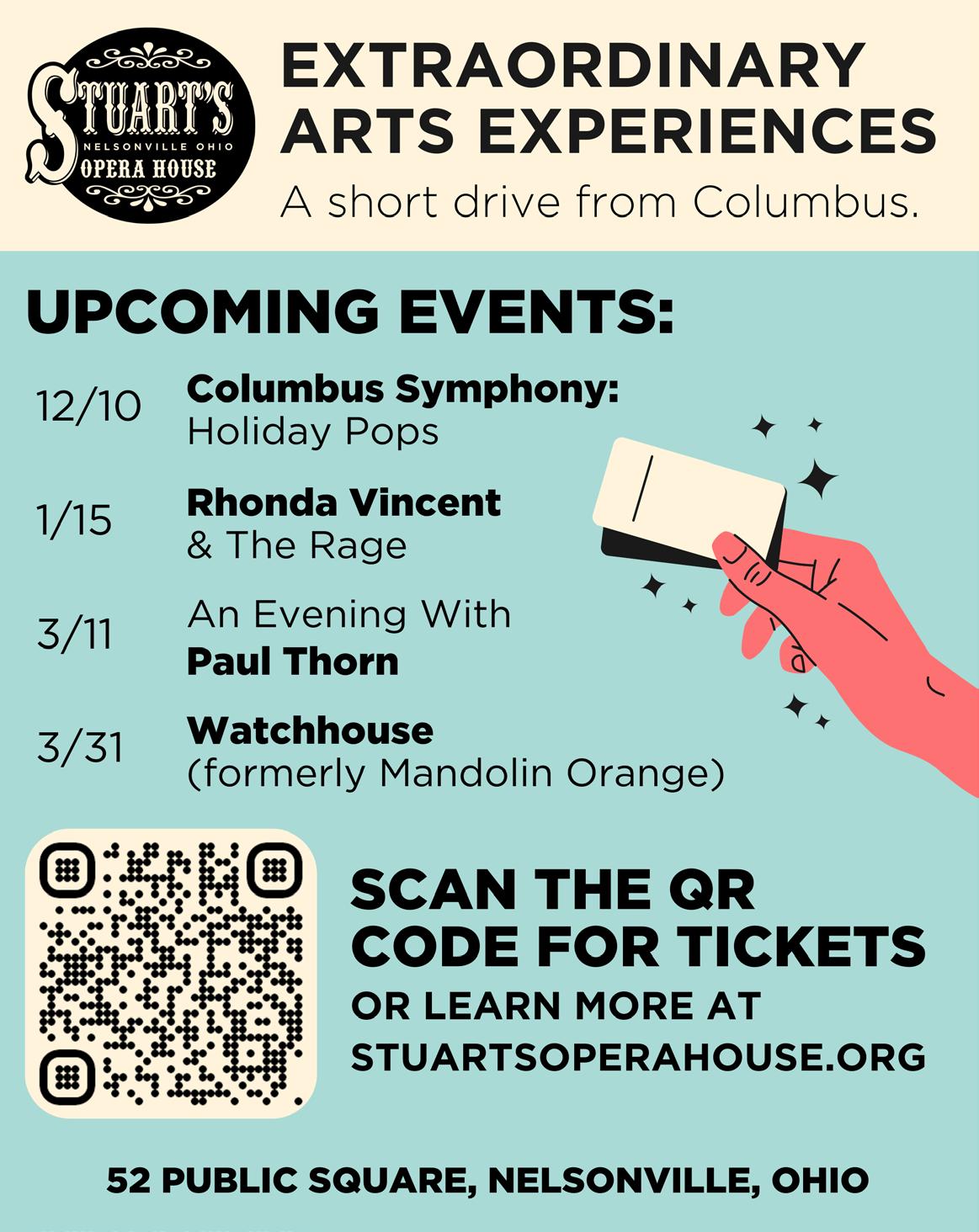
According to one news article, the balloon and car rose to a height of 25 to 30 feet and then just hovered until gas leaks brought it back down. Another article claimed the contraption never left the ground at all. Whichever the case, the crowd became enraged. And when someone who appeared to be in authority announced that the pipeline they had tapped could not supply enough gas for a proper ascent, the audience had had enough.
Spectators howled and began demanding their money back. When Professor Campbell and his associates refused, about 200 men and boys spilled out onto the diamond and did their very best to destroy the aircraft. They began breaking apart the car’s woodwork and tearing giant holes in the balloon. Police who were called to the scene were helpless to do anything but break up a few isolated fights.
Not content with the destruction of the airship, some rioters climbed the large, right field scoreboard and began hurling tin signs that were used to inform base ball fans of the progress of a game. Metal was sent in all directions, barely missing some on the field. A few of the angrier witnesses shouted for a lynching. In the end, cooler heads prevailed and the crowd eventually dispersed, leaving the airship in tatters.
It is presumed that Professor Campbell and his pilot left Columbus as soon as possible. There are no reports of them ever returning. And very little was ever reported about any future attempts to launch a similar balloon.
To read more stories like this, check out John M. Clark's book, "Columbus Uncovered"

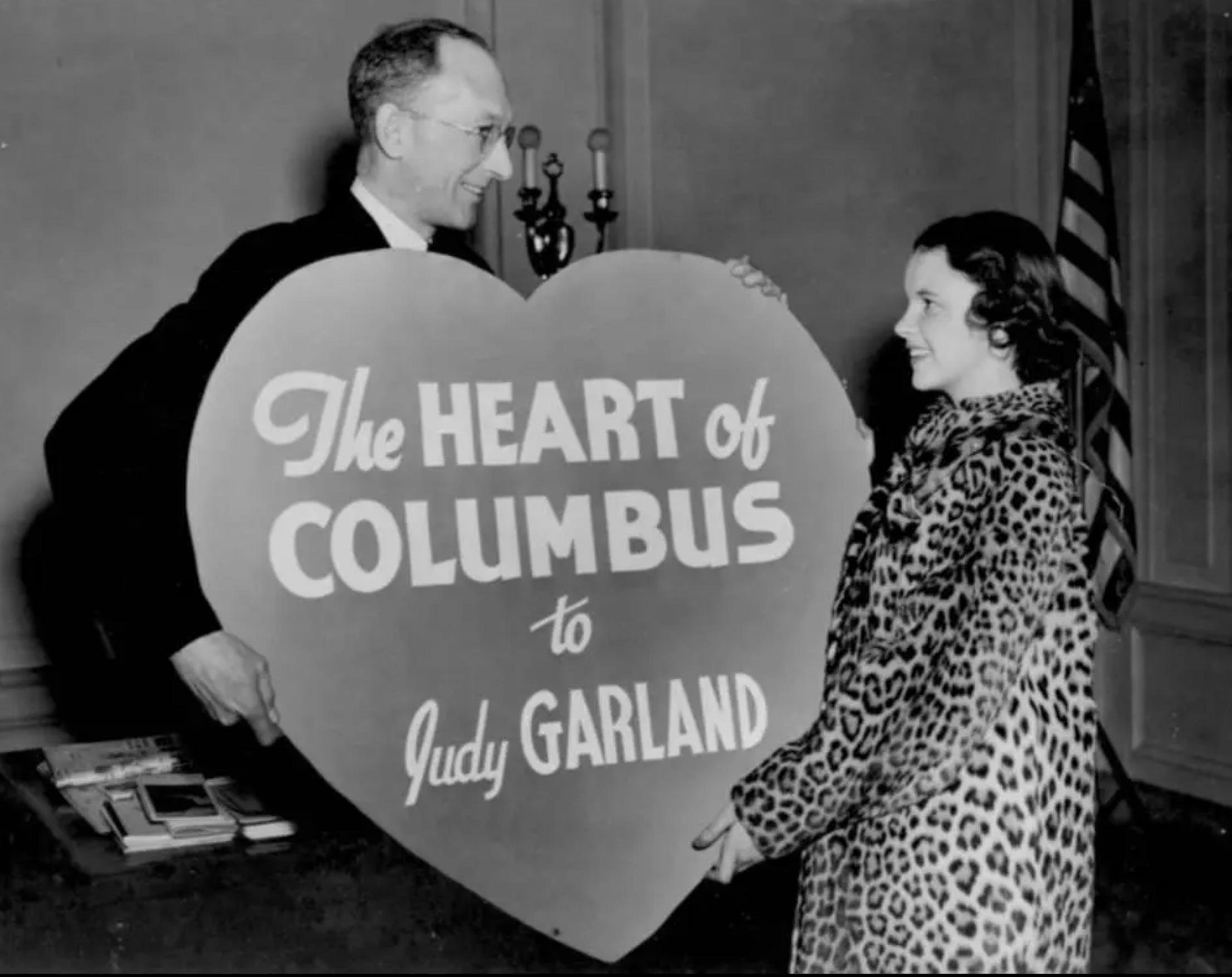
In March 1938, 15-year-old Judy Garland arrived in Columbus as part of the starlet’s promotional tour for her new movie, Everybody Sing. For two straight days, she introduced multiple showings of the film at the Ohio Theatre, singing a few songs and sharing laughs with adoring audiences. As a testament to her popularity, the teenaged singer and actress was already earning $1,500 a week (about $32,000 in today’s money). And this was a full year before the release of “The Wizard of Oz,” which catapulted Garland into super-stardom.
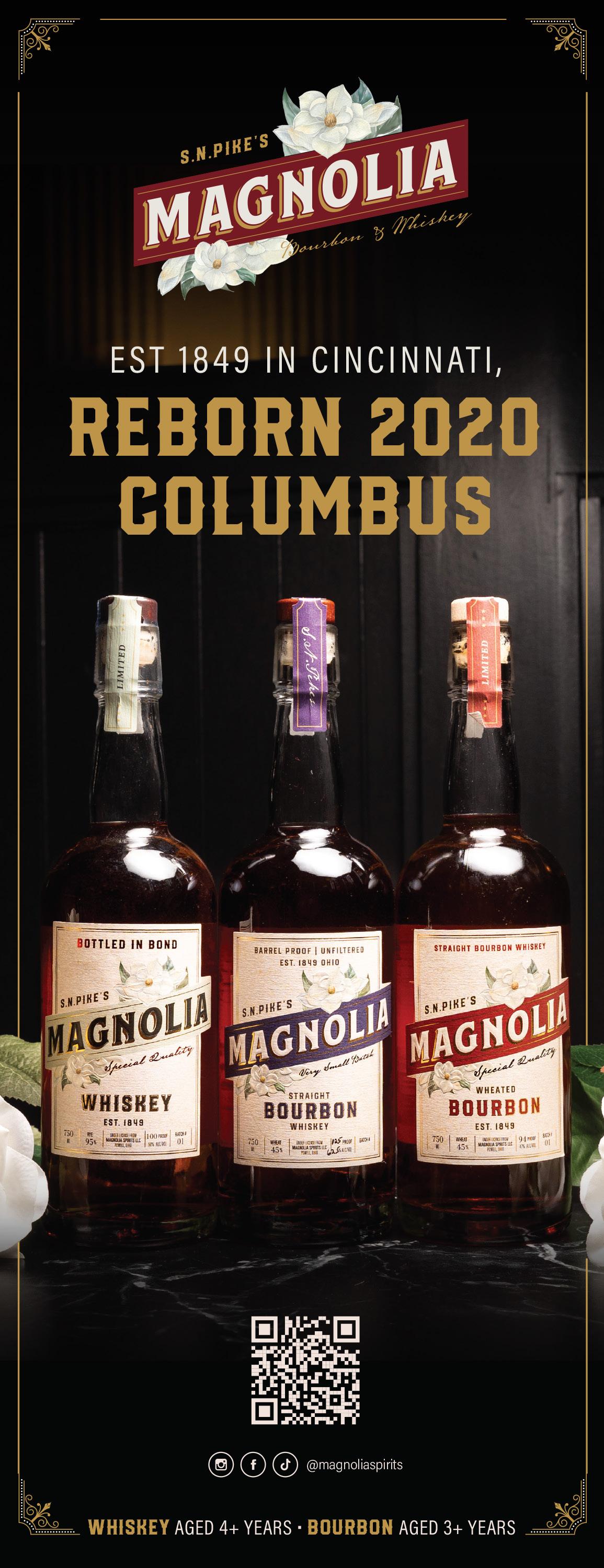
Upon Garland’s arrival in Columbus, Mayor Myron Gessaman presented her with a giant, cutout heart proclaiming her as the “Heart of Columbus.” She, her mother and Roger Edens, an award-winning songwriter and Garland’s mentor, then settled into rooms at the Neil House on South High Street, across from the Ohio Statehouse.
In the short time she was here, Garland enjoyed ice cream and sodas from a shop at North High and Second Avenue, the approximate present-day location of Northstar Café. And at her request, a ping pong table was set up behind the Ohio Theatre’s screen, where she would pass the time between stage appearances by playing against theater staff members.
It was during one of her brief live appearances between screenings that Garland was interrupted by two young men who took to the stage approached her. They introduced themselves as members of Sigma Chi fraternity at Ohio State University, then presented the surprised teenager with a fraternity pin and an invitation to dinner at the Sigma Chi house. Garland promptly accepted.
Upon being “pinned,” Garland was declared the “Sweetheart of Sigma Chi” and an official member of the fraternity’s Alpha Gamma chapter. And though a Life Magazine photographer was always in tow, the popular monthly’s editorial staff insisted the idea for the dinner began with fraternity members and not as a publicity stunt. (Photos of the event ran in the magazine’s March 28th issue under the title, “Life Goes to a Party.”) →
When a young Judy Garland visited Columbus on a 1938 promo tour, the city gave her a unique Midwestern welcome
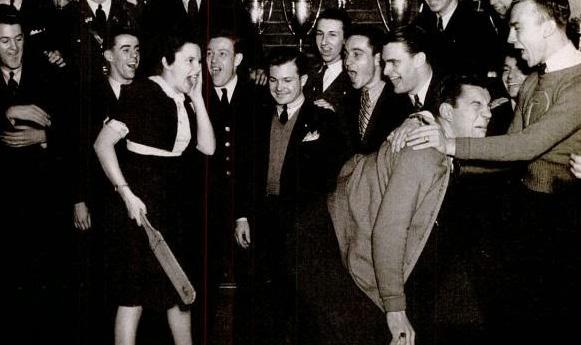
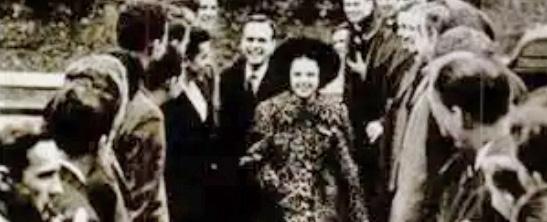


That evening, Garland was whisked to the Sigma Chi house, where she was escorted to the front entrance by Wesley Leas, OSU senior class president and drum major of the Ohio State marching band. In addition to dinner, Garland was treated to one fraternity brother’s impersonation of an ape; she was encouraged to try out the chapter’s wooden paddle on a couple of members, including James McDonald, co-captain of OSU’s football team; and she was toasted with glasses of milk by the wholesome-appearing young men.
Garland’s 1938 visit to Columbus was not well-documented (aside from the Sigma Chi connection), though she apparently was filmed during two of her on-stage appearances at the Ohio. A 15-year-old high school student from Bexley named Russell Leach carried his 16-millimeter film camera into the theater on two occasions, following her every move on stage with his motion picture lens. He called his amateur movie, “A Night in Columbus” and sent it to Garland, who reportedly screened it at her home. Unfortunately, Leach was not permitted to enter the theater with his sound equipment – for which he sent Garland his regrets.
Almost 30 years later, Garland returned to Columbus, to perform in concert at Vets Memorial Auditorium, on West Broad Street. The date was October 7th, 1967. Now, at 45, she was the mother of three children, with four ex-husbands and more than 20 attempts at taking her own life. She told reporters here that she hadn’t slept well on the train, and reviewers gave her only “so-so” reviews.
But despite her health problems, both physical and mental, fans still couldn’t get enough of the woman who once sang about finding true happiness “over the rainbow.” And that is especially evident from the cheering captured by an amateur, audience-member recording of her concert. Audiences loved to love Judy Garland. And they did so, right up until the very end. Two years after her Vets Memorial performance, and having married for a fifth time, she died of an accidental drug overdose at her new home in London.
To read more stories like this, check out John M. Clark's book, "Columbus Uncovered"

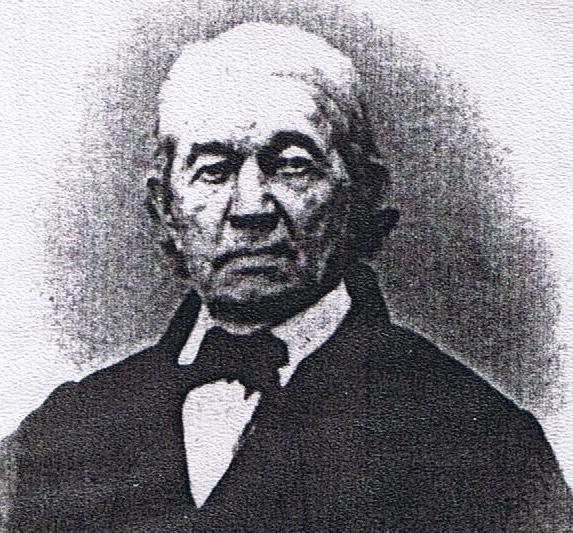
For the brave pioneers of early 19th century Columbus, the risks were many – aggressive wild animals like bears, panthers and wolves; attacks by Native Americans and rampant, deadly disease. But, perhaps the most insidious of all the threats they faced was the scourge of the common squirrel.
Often derided by gardeners today as “rats with furry tails,” these beady-eyed rodents threatened the very existence of the frontier family by eating their way through settlers’ corn fields. Without corn and other crops the squirrels thrived on, those brave and hardy pioneers would have faced almost certain famine.
And it wasn’t just Columbus that was under attack. In 1807, a full five years before the state’s permanent capital was named, Ohio’s General Assembly took the unusual step to force every tax-paying resident in Ohio to kill squirrels. The number was determined by how much property tax a particular resident was charged each year; but the law required no fewer than 10 per taxpayer. Officials imposed fines on citizens who failed to turn in the minimum number of scalps, which were recorded in the tax rolls and then burned.
Unfortunately, Ohio squirrels continued to thrive. And, 15 years later, one man took it upon himself to attack the problem, head-on.
Christian Heyl was Columbus’ first German immigrant – a baker by trade, who came to Central Ohio with the hope of selling bread to soldiers stationed in nearby Franklinton. He became a leading figure in the fledgling city – serving 14 years on City Council and 14 years as a judge. Heyl was also appointed to the first public school board here, was the city’s first fire chief and a successful business owner. He even founded the city’s first Lutheran Church and helped underwrite what would become Capital University. Christian Heyl knew how to get things done.
With the squirrel population here still out of control, Heyl arranged for a contest – to see who could kill the most squirrels in one weekend. He encouraged hunters from all over Franklin County to form teams of three or four and to meet at his home at 2 p.m. on Saturday, August 31, 1822. The reward for bringing in the most scalps was an enticing one – a full barrel of whiskey. By the end of the hunt, the combined effort had resulted in the eradication of at least 19,660 squirrels. “At least” because some of the teams didn’t bother to return. For once, the rampant squirrel population appeared to be in check … but for how long?
To read more stories like this, check out John M. Clark's book, "Columbus Uncovered"

In the early 1800s, Squirrels threatened the livelihood of Columbus and its citizens; Here’s the historic way that residents responded


Given the love for all things sports in Columbus, you would be excused for first thinking the statue at John Glenn International Airport represents a women’s basketball coach. But that’s no ball the woman is holding. It’s planet Earth, as in the one she circled in a single-engine plane, by herself, in 1964.
From the time Jerrie Mock took a short plane ride with her father at the age of five, the Newark, Ohio, native knew flying was in her blood. As a college student, she studied aeronautical engineering at Ohio State University – the only woman in her class – and the only chemistry student to receive perfect test scores.
At age 20, Mock, for reasons that aren’t entirely clear, dropped out of college. She married an advertising executive, took up residence in Bexley and began raising three children. But thoughts of flying were never far from her mind, and in 1958 she earned her private pilot license. Husband Russ Mock also received his, and soon the couple were half-owners of a decade old, single-engine Cessna with unreliable brakes and a fresh paint job to cover

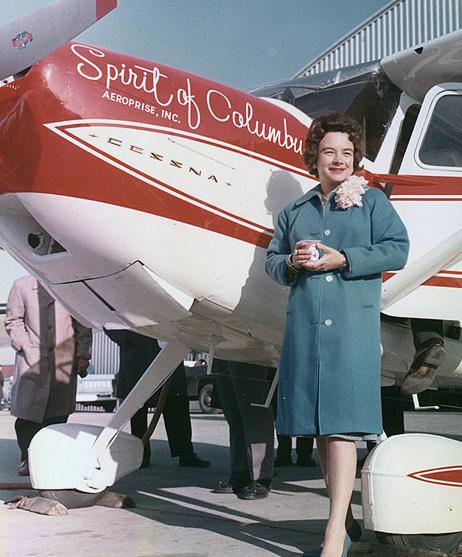
the cracks. →
When Mock told her husband she was bored sitting at home all day, he said, “Maybe you should get in your plane and just fly around the world.” Russ was joking. But Jerrie took it seriously and began to contemplate the possibility. Soon, she was onboard with the idea. Making her plans in 1963, she didn’t even realize at first that no woman had ever done what she was about to attempt – to complete a solo plane trip around the globe. Amelia Earhart had tried to fly around the world 26 years earlier –but in a much-more sophisticated airplane and with a navigator on board. It was on that attempt that Earhart disappeared.
Mock’s year-long preparations involved planning 19 separate touchdowns in about as many countries. Flight plans had to be filed. Maps were drawn. Foreign embassies had to be informed, lest they mistake her for a spy and have her shot down. Then there was the issue of expenses. Russ, ever the promoter, persuaded the Columbus Dispatch to help finance the trip in exchange for exclusive stories from along the route.

Mock dubbed her plane the Spirit of Columbus. And on March 19th, 1964, after dropping her children off with her mother-in-law, she climbed into the cramped cockpit and took off. “Cramped” because the three other seats in the small plane had been removed and replaced with fuel tanks so that she could make it over the oceans.
Heading east, Mock encountered problems almost immediately. Thick clouds prevented her from making visual assessments of her location. Two onboard directional finders registered 60 degrees apart. Her high-frequency radio would not operate. She overshot her first destination, Bermuda, and had to turn around. Upon landing, winds were so strong that she had to put the weight of her entire 100-pound body on the brakes. And crewmen on the ground had to help stabilize the plane as it literally spun around in the wind. While in Bermuda she had the radio checked out. Someone had
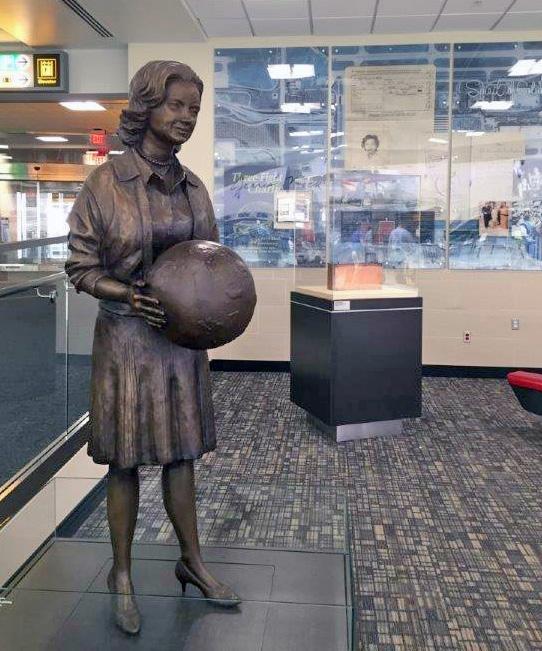
deliberately disconnected it.
After such an exhausting and dangerous first leg, few would have blamed Jerrie for giving up. But she persevered. Days were long; stops were short. She washed her one blouse and skirt in hotel room sinks. Weather delays and equipment malfunctions persisted. Then, four weeks later, she made her final refueling stop, in Bowling Green, Kentucky. Russ radioed his wife to ask when she would be home, as the governor, the Federal Aviation Administrator and several thousand fans were waiting to welcome her.

Mock landed at Port Columbus Airport on April 17th, 1964 – 29 days and 23-thousand miles after she had started. She had set seven aviation records, including the first woman to fly over both the Atlantic and Pacific Oceans. A month later, Mock and her family traveled to Washington, D.C., where President Johnson awarded her the FAA’s prestigious Exceptional Service Decoration.
Many expected Mock’s fame to continue. One TV game show host went so far as to suggest Doris Day would portray Mock in a movie about her incredible feat. But no movie offers came. Mock continued to fly, and she set more records. But the public soon forgot about her. Some have speculated that the social turbulence of the ‘60s diverted attention from her. Mock eventually divorced her husband, moved to Florida and bought a small house with her divorce settlement. Even her neighbors didn’t know she was a record-setting aviatrix.
On April 17th, 2014, exactly 50 years from the day she finished her famous flight, Jerrie Mock was honored with a sculpture by local artist Renate Fackler at Port Columbus Airport. (Columbus would honor another local aviator, John Glenn, by renaming the airport in his honor two years later.) Mock didn’t attend the unveiling ceremony, but she did send greetings by video: “Columbus is a great community, and I appreciate all that you are doing to respect its history and to bring an even better future. Long live the spirit of Columbus.”
Jerrie Mock died five months later, at the age of 88. At her request, her ashes were scattered over the Gulf of Mexico. And the Spirit of Columbus? In 1975, it was donated to the National Air and Space Museum. Today, you can see it at the museum’s
To read more stories like this, check out John M. Clark's book, "Columbus Uncovered"
www.Thunderkiss.coffee





North Market Downtown 59 Spruce St, Columbus, OH 43215
Thunderkiss Coffee offers SAME DAY home delivery and shipping Monday through Friday. Taste this choice coffee served in the best indy cafes and gourmet markets. Fresh roasted coffee in 1lb and 5lb bags (ground upon request). Half gallons of cold brew coffee. Home delivery up to 20 miles from Columbus. Ship coffee gifts from our website and add a custom message. Using dependable UPS for the holidays.
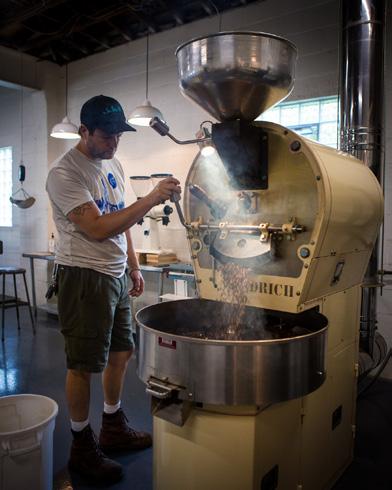

Digital gift cards available on website
Thunderkisscoffee@gmail.com Instagram: @tkisscoffee Shop614.com
North Market Bridge Park 6750 Longshore Street, Dublin, OH 43017
Where else can you buy one-of-a-kind gifts, shop a wide selection of fresh food for holiday meals, and even get lunch -or- dinner (libations, too!) all while supporting local merchants right here in central Ohio? North Market Downtown and North Market Bridge Park have all of this and more for you to enjoy this holiday season!
This season, support local, fresh, and authentic independent businesses at your North Market!




"X-Golf is the next generation of indoor golf and our eGift Cards are the gift every player on your list will want this holiday season. We’ve reinvented the player experience by creating the most accurate indoor golf simulators on the market today, giving every person the power to take on the world’s top courses, compete in a wide variety of game formats, improve their swings with superior analytics, and of course - be totally entertained. X-Golf’s first Columbus location opens this December in the heart of the Grandview Yard and will feature seven simulators inside of a sophisticated sports bar - hosting weekly leagues, corporate events, PGA professionals to provide lessons, and much more."

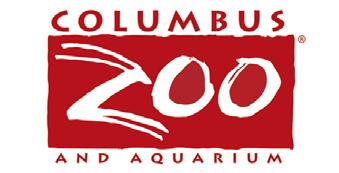

Give the gift of membership this holiday season with a membership to Zoombezi Bay, the Columbus Zoo and Aquarium or The Wilds. From the splash or Zoombezi Bay to unforgettable animal encounters at the Columbus Zoo and The Wilds, plan a whole year of adventure now.



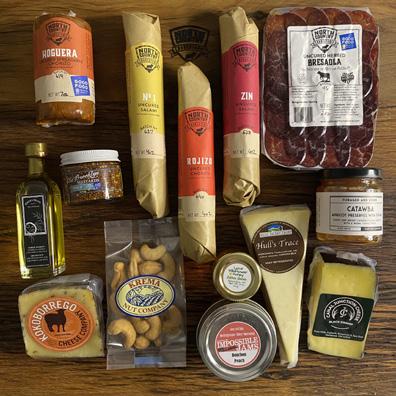
Shop local this holiday season by giving the gift of Ohio cheese! At ShopOhioCheese.com, find a variety of Ohio cheeses that friends and family will love. From traditional favorites to artisan specialties, find one-of-a-kind cheesy gifts — or simply treat yourself!
Ohio is home to nearly 30 cheesemakers throughout the state. Ohio-made cheese can make the perfect gift for those near and far, as well as add a sophisticated touch to any event. Shop featured specialty collections at ShopOhioCheese.com to make holiday events like family gatherings or dinner parties extraordinary.


LVL Up Paintball Park is a Columbus destination for recreation, but it’s also home to one of the best competitive paintball teams in the country
By Melinda Green Photos by: Leonardo CarrizoAbout half a mile off of Harrisburg Pike in Grove City, LVL UP Sports Paintball Park hides a claim to fame that few people know even exists, behind a growing facility that becomes more popular every year.. →
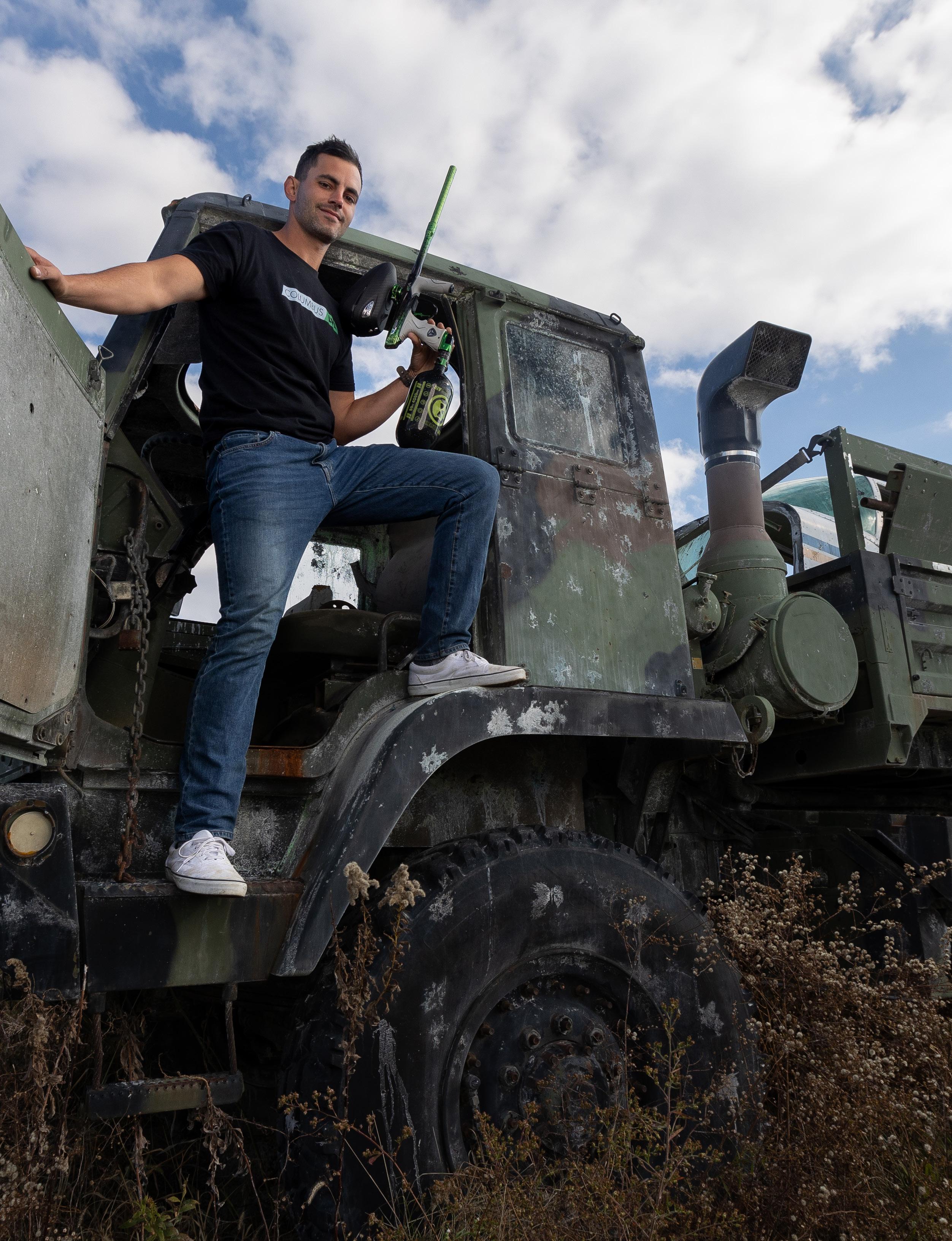
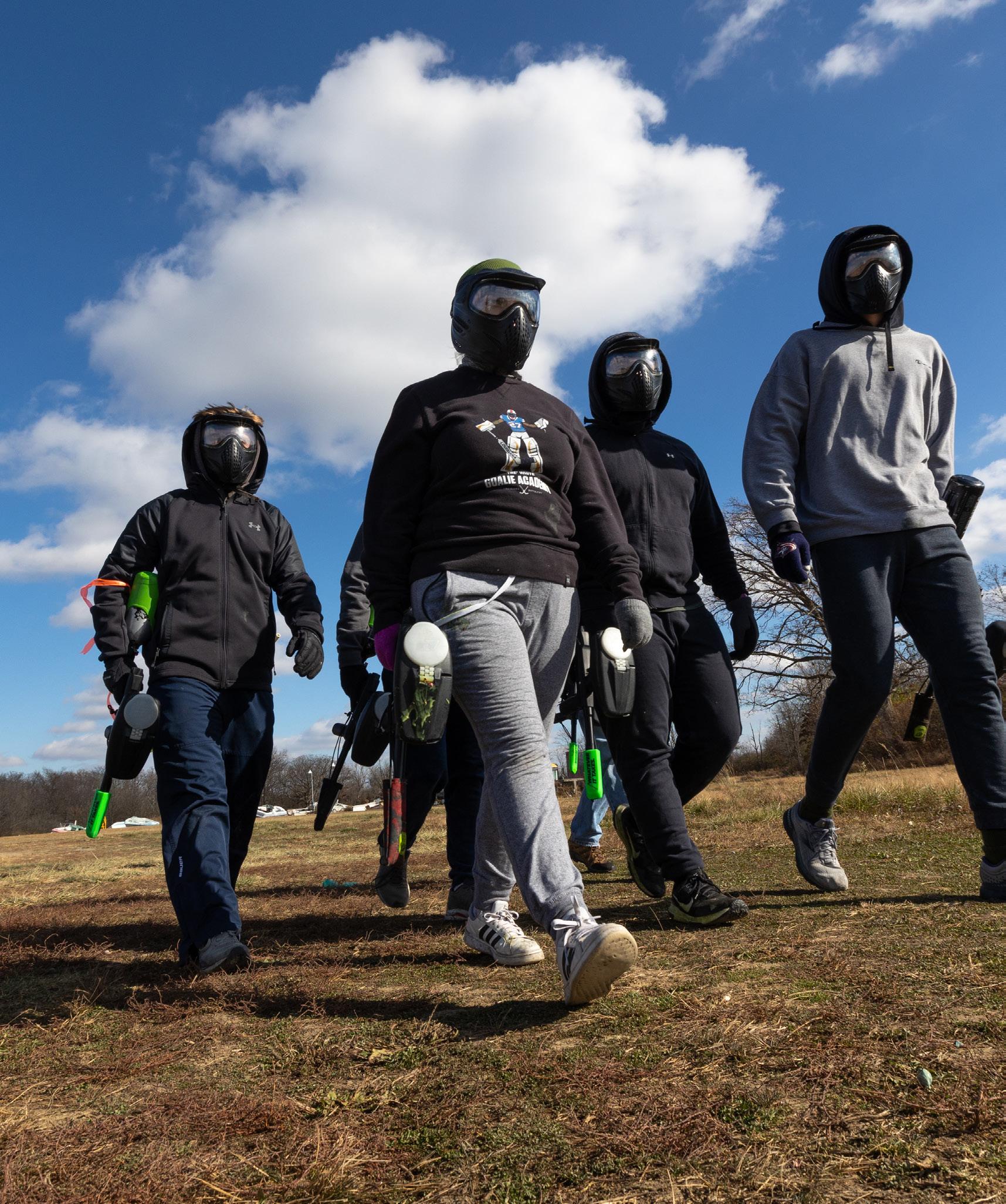

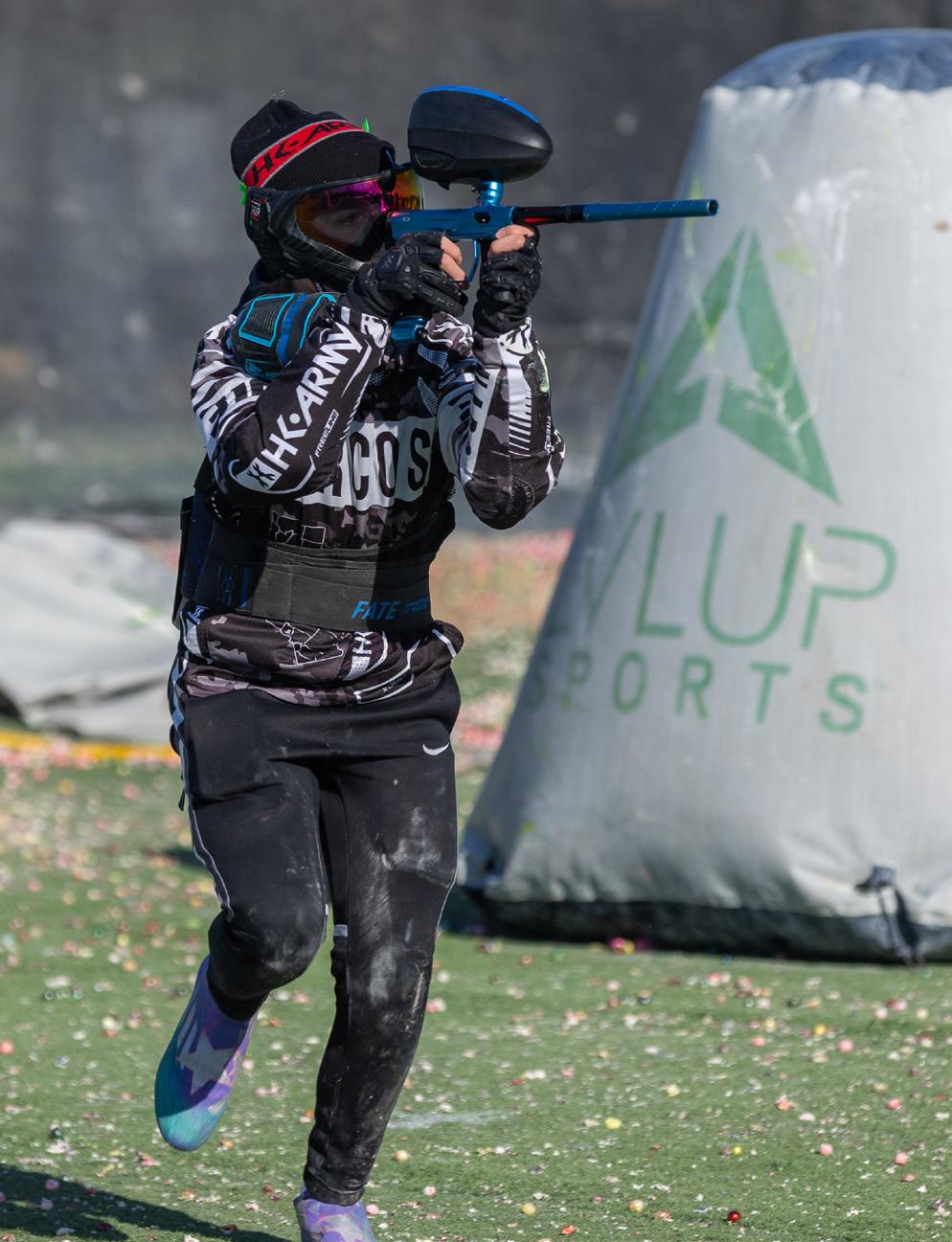

 ↑ Columbus LVL training
↓ LVL Up Sports Paintball Park owner Dave Pando
↑ Columbus LVL training
↓ LVL Up Sports Paintball Park owner Dave Pando
About half a mile off of Harrisburg Pike in Grove City, LVL UP Sports Paintball Park hides a claim to fame that few people know even exists, behind a growing facility that becomes more popular every year.
Owner Dave Pando is a lifelong paintball player who got his start writing for paintball magazines, leveraged that into a job at a Los Angeles paintball park, and eventually decided he wanted his own facility. His native Cleveland was too cold, so he settled on Columbus and a 36-acre corn field. Five years and a lot of hard work later, business is going great.
“We are a birthday party business at our core,” says owner Dave Pando, “plus bachelor parties and corporate events.” Plus, he has one of the nicer pro shops in the area.

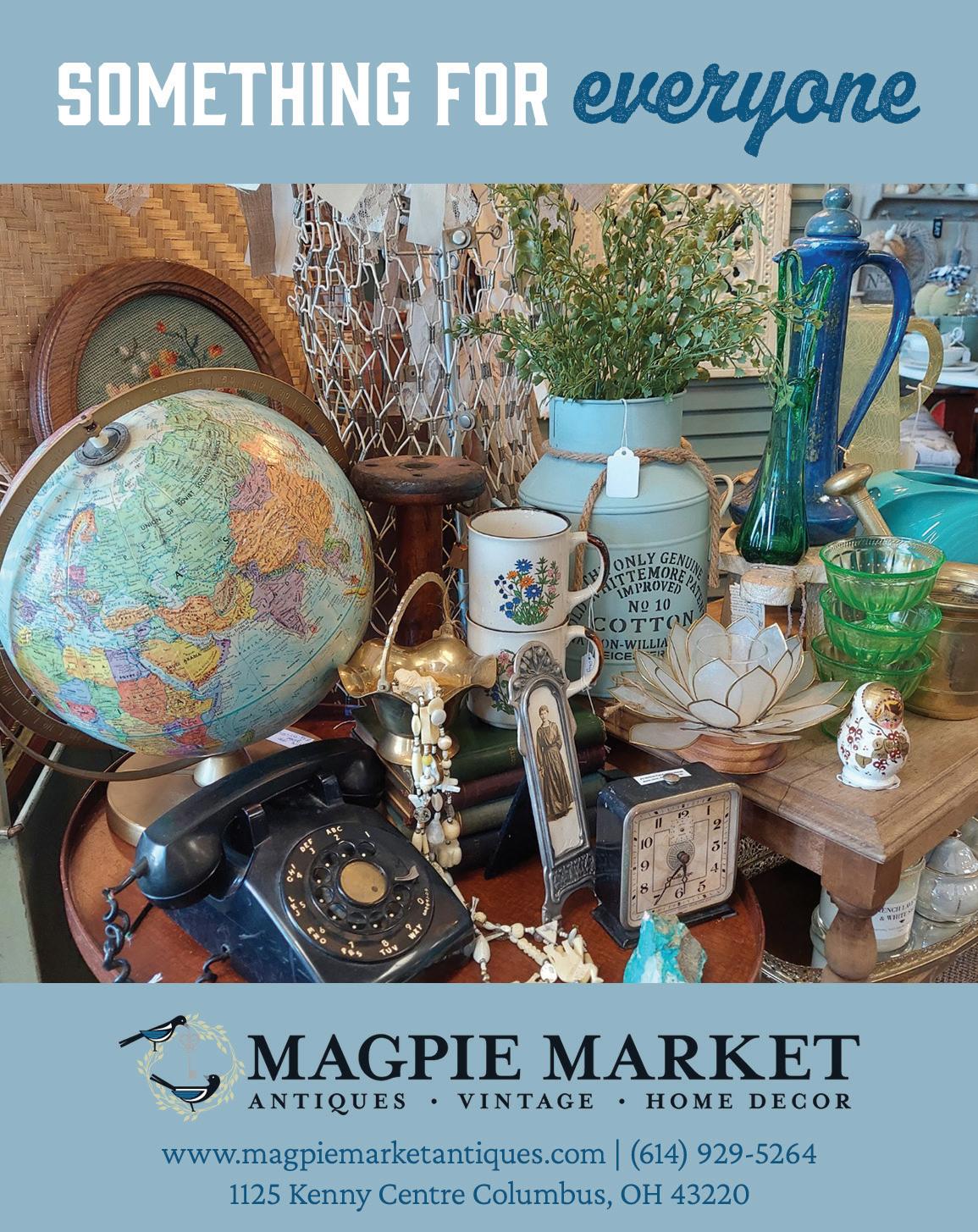
Like most paintball facilities, weekdays are fairly slow and reservation-only, with corporate outings and groups of youth who are out of school.
“It’s never a dud; there’s never no one here,” Pando says. “But on Saturdays, it is a zoo.” Hundreds of players pack the fields, weekend visitors and amateur teams, with groups of moms decorating the staging areas. “It’s beautiful chaos.”
Open year-round, the sports park has 10 different paintball fields featuring hills, pipes, boats, tires, woods, and the biggest paintball castle in the Midwest – a 2-story building in the shape of LVL UP’s logo. There are also a handful of “hardcore” fields where the pro team practices.
Wait… Columbus has a professional paintball team? We sure do. In fact, it’s one of only a few of the 20 professional teams that’s not on a coast or in a warm, southern state.
“Pro is very difficult; you have to win your way into the division,” Pando says. Like any other pro sport, it’s by invitation only, and, like some other pro sports, the lowest-ranked team each season gets relegated to Division I Amateur.
The coach handles the roster, selecting back players who are larger and provide cover and communication, and front players who are smaller and agile, running and diving for quick shots.
The team only practices hard in preparation for a match: up to ten hours a day, shooting hundreds of thousands of paintballs. The rest of the year, practice is likely drills.
Pro matches are held at five big, national events, beginning in March and culminating at the NXL World Cup in November, with hundreds of teams and thousands of participants at each. Amateur Divisions I and II also compete at the national level.
At these events, teams play multiple matches in succession, hoping to advance to the next round, and if you get to play on Sunday, you’ve done well. The big events are held at huge recreational fields, with bleachers and nets set and regulation inflatable bunkers set in a pre-configured layout. The layout changes from event to event, but all divisions competing use the identical layout, and, since it’s released in advance, the team owners can configure their own spaces for practice and strategizing.
Naturally, the pros are hardcore. “They’re shooting full auto,” Pando says. “It’s like hockey, a little bit violent. These [guns] shoot 10 balls per second; you might get shot 30 or 40 times.” In the two-minute break between matches, players run off the field, and a pit crew refills tanks and ammo and wipes hits off. When the timer hits zero, anyone still in the pit puts the team at a disadvantage.
Columbus LVL has been on “the run of a lifetime” in 2022. At November’s World Cup of Paintball, the biggest event of the year, they were eliminated in the preliminaries (“it’s like David and Goliath,” Pando says of the matchups), but Columbus remains ranked 6th at the end of the season—an incredible feat.

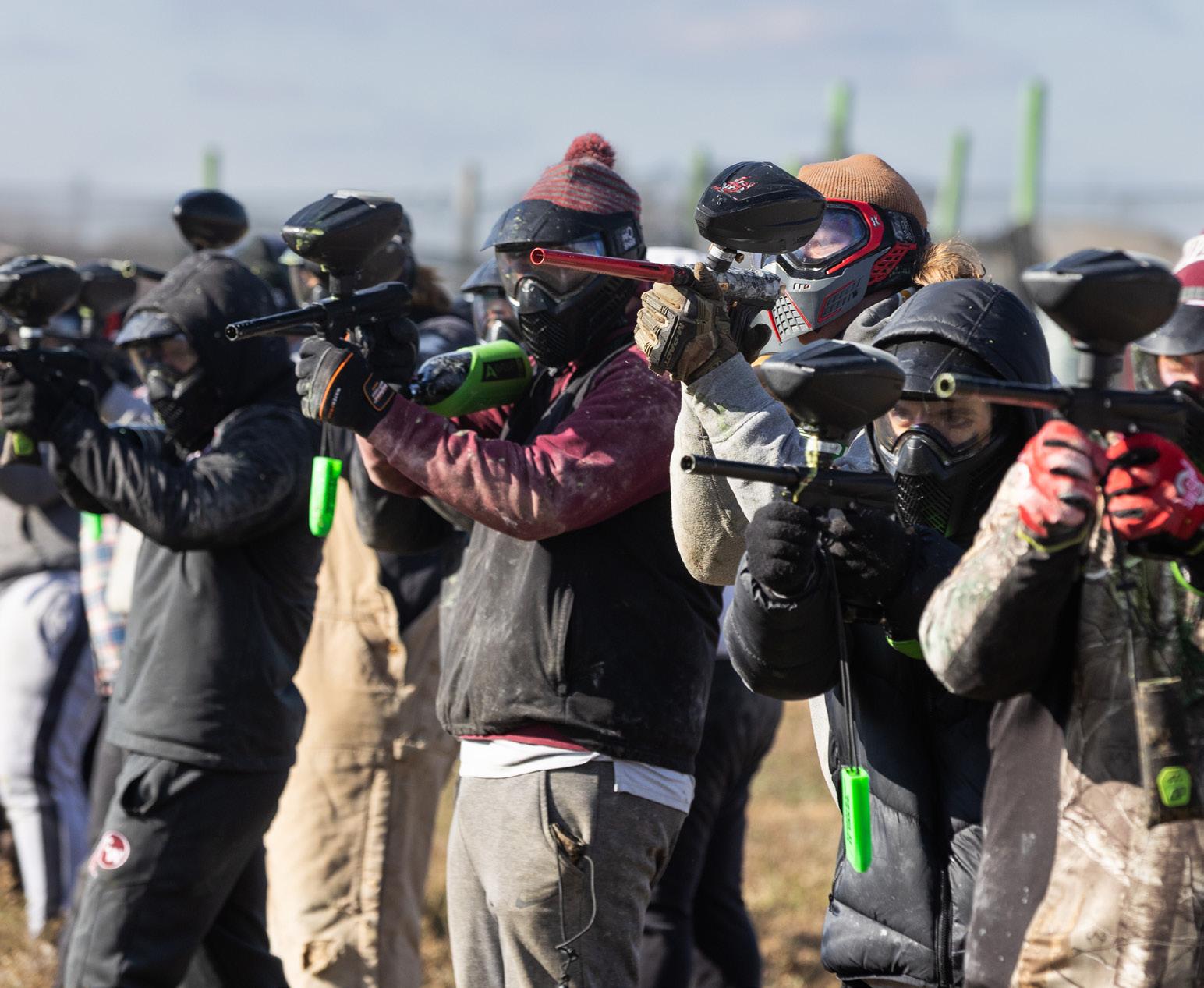
“It’s crazy, competing against teams that spend half a million dollars paying players, and we’re just, like, a home-grown bunch of misfits. But we’re beating the rich teams,” Pando says. “We’re very popular in the professional scene. We’re kinda like rock stars.”
Not only does Columbus not spend big money paying its players; it doesn’t pay its players at all yet. “It’s pretty much only for clout and glory. It’s expensive, and there’s no big payoff,” Pando admits. Sponsors, like Saucy Brew Works (who streams matches at its tap room), cover the costs of participation.
At the highest competitive stages, the sport is mostly male-dominated, but there is a women’s league as well. And, Pando says, “at the recreational level, you’d be surprised how many women there are.”
“You could be tall, short, young, old— paintball is a field leveler. Everyone can do good. Paintball does not discriminate, and that’s what’s so cool about it.”
For most people, Pando continues, “Paintball is a hobby. But some people cross over to the dark side, where this [gestures at the fields] is not intense enough. When you get on the small field, it’s fast, in-your-face, shooting people from point-blank. Once you get that adrenalin rush, nothing else is the same.” And that adrenalin rush has put Columbus on the paintball map.
To learn more, visit lvlupsports.com


From Dublin to Bexley, there’s no need to hide at home all winter long
By Mallory Arnold Story Design by Victoria SmithCome on it’s lovely weather for a sleigh ride together with you! The line in the classic Christmas carol sounds fun, but who has a sleigh handy these days? We put together a few winter activities to do near you that don’t require a horse-drawn carriage.→
Bundle up and take in Dublin’s beautiful parks cloaked in sparkling, white snow. Indian Run Falls drips in icicles hanging off trees and cascading waterfalls. The walk to Hayden Run Falls is a peaceful journey, finished with the picturesque frozen falls.
No surprise here – Wildlights is one of the most exciting things to do in Dublin during the winter. The lights run Nov. 18-Jan. 1 and include glittering exhibits like The Sparkling Spruce, the S’mores Experience, Carousel and more. Admission is $24.99, but on Dec. 3, you can bring six canned goods and get in for free.
For those who prefer indoor winter activities, there’s no better activity to keep you warm than whiskey tasting. The Celtic Cocktail Trail brings you to some of the best Dublin bars and restaurants, all of which offer delicious whiskey cocktails.
On Thursday nights, you can enjoyed themed whiskey at The Bourbon Barrel Room for $11.
For a more local, relaxed scene, McClellan’s Pub has one of the largest whiskey and bourbon collections in central Ohio.
Nature enthusiasts will love the 7,000 acres of forests, wetlands and prairies at Battle Darby Creek Metro Park. Watch the infamous bison in the Winter Bison Pasture from the Nature Center’s two viewing platforms or snowshoe through the miles of trails. Not to mention Dyer Mill Trail is reserved for cross-country skiing.
Get out of the cold and warm up with wine! Plum Run Winery offers an array of crafts including mead, cider, wine and beer. Try a holiday-themed wine like cranberry, apple or honey mead. Or sip on a house crafted cocktail like a butterscotch coffee or cinnamon apple whiskey sour.
For a fun Christmas shopping experience, nab a coffee at Transcend Coffee + Roastery and stroll along Broadway in the Grove City Town Center. You’ll find unique gifts and décor from places like Country Hearth Primitives, The Farm Table on 62, Zassy’s Tap Room and Home Décor,



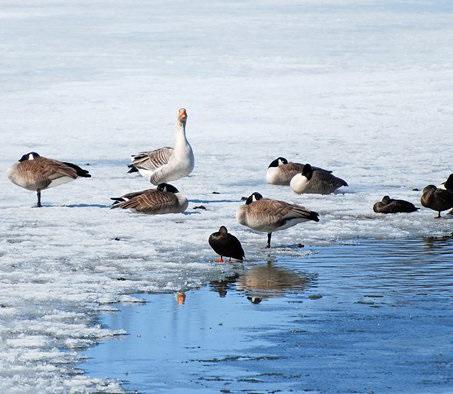

The holidays can be stressful. Sometimes the most fun winter activity is doing absolutely nothing. Woodhouse Spa offers muscle-easing massages, full-body skin treatments, luxurious facials and more. You can even pick from packages based on what you’re looking for, whether it’s a refresh for your dry, tired skin or day of pampering designed for expectant mothers.
No one does Christmas like Uptown Westerville. Enjoy the Uptown DORA drinking on Thursday and Friday evenings from 5-10 p.m. and Saturdays from 12-10 p.m., when beer, wine and cocktails can be consumed while shopping. The Westerville Tree Lighting Ceremony at Westerville City Hall and encounter live music, carolers, costumed characters and more.


The 123-acre Inniswood Metro Gardens is a winter wonderland come December. Streams freeze over and woodlands turn into a snowy backdrop. Get your body warmed up by taking hikes along Sister’s Garden Loop, Frog Talk Walk or Chipmunk Chatter. Interactive maps can be found at www.metroparks.net.
The Bexley Recreation and Parks Department has established informative trail signs displayed along the paths in Jeffery Woods, each highlighting features and facts about the views.
The holidays mean sweets, sweets mean bakeries, which Bexley has tons of. Take an afternoon to do a taste-test of pastries baked around Westerville. Try a granny roll or cheese Danish at Resch’s Bakery, a warm zucchini mini loaf or petit-choux from Cherbourg Bakery, and award-winning cinnamon rolls or scones from Kitties Cakes.


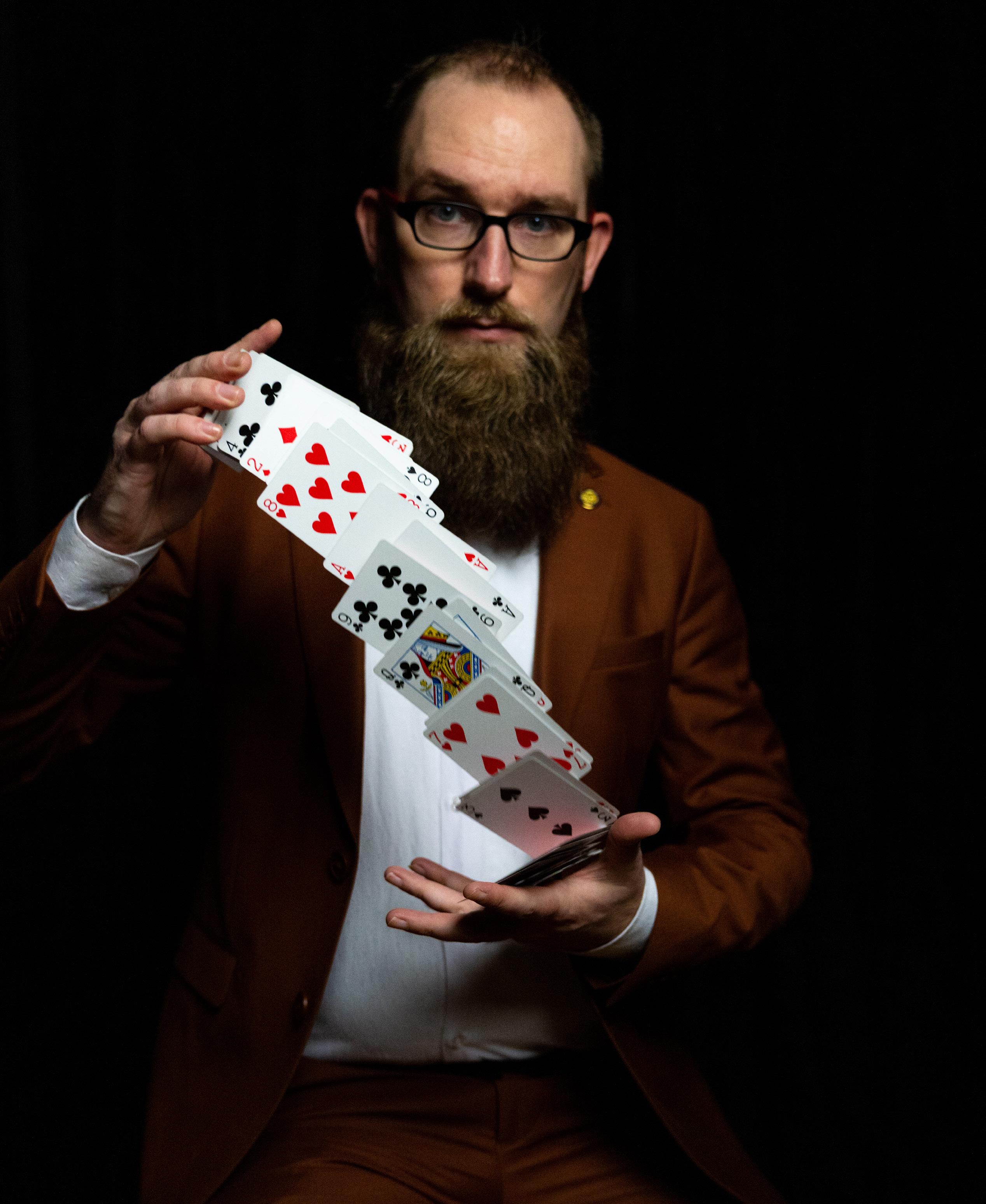
It’s not every day that you meet a full-time, professional magician. Erik Tait just might change that, someday, though, through his efforts in the industry.
“I think the thing a lot of people get excited about is that I’m a full-time, working professional,” he said. “My job is to go to an event and do magic tricks.” That means performing at private parties, corporate events, and especially magic theaters.

But performing isn’t his only job in magic. Tait is as multifaceted as he is skilled, with roles ranging from lecturer to podcaster to effect developer.
But first, the performing. Tait specializes in sleight-of-hand tricks, and he performs them at some of the most exclusive venues in the world. Take, for example, the Magic Castle in Hollywood, a private, invitation-only, club with a small, close-up gallery for the kind of work that Tait does best. Or the Chicago Magic Lounge, again with a gallery specifically designed for that close-up, sleight-of-hand work.
The second big aspect of Tait’s career is teaching and lecturing all over the world, formally and informally. He’s spoken at MAGIC Live in Las Vegas, and, in 2023, he’ll be speaking at Magifest in Columbus and at the Blackpool Magic Convention in England—the largest magic convention in the world.
He also hosts a sort of “jam session for magicians” on Instagram at 1pm Eastern Time on Mondays, exploring different ways to do card magic. Maybe a hundred magicians will tune in, but the recording stays up for a week and gets thousands of engagements.
Tait’s day job, though, is with Penguin Magic, the world’s largest magic retail company. Penguin builds and produces all kinds of magic tricks and effects right here, in Columbus, Ohio. →
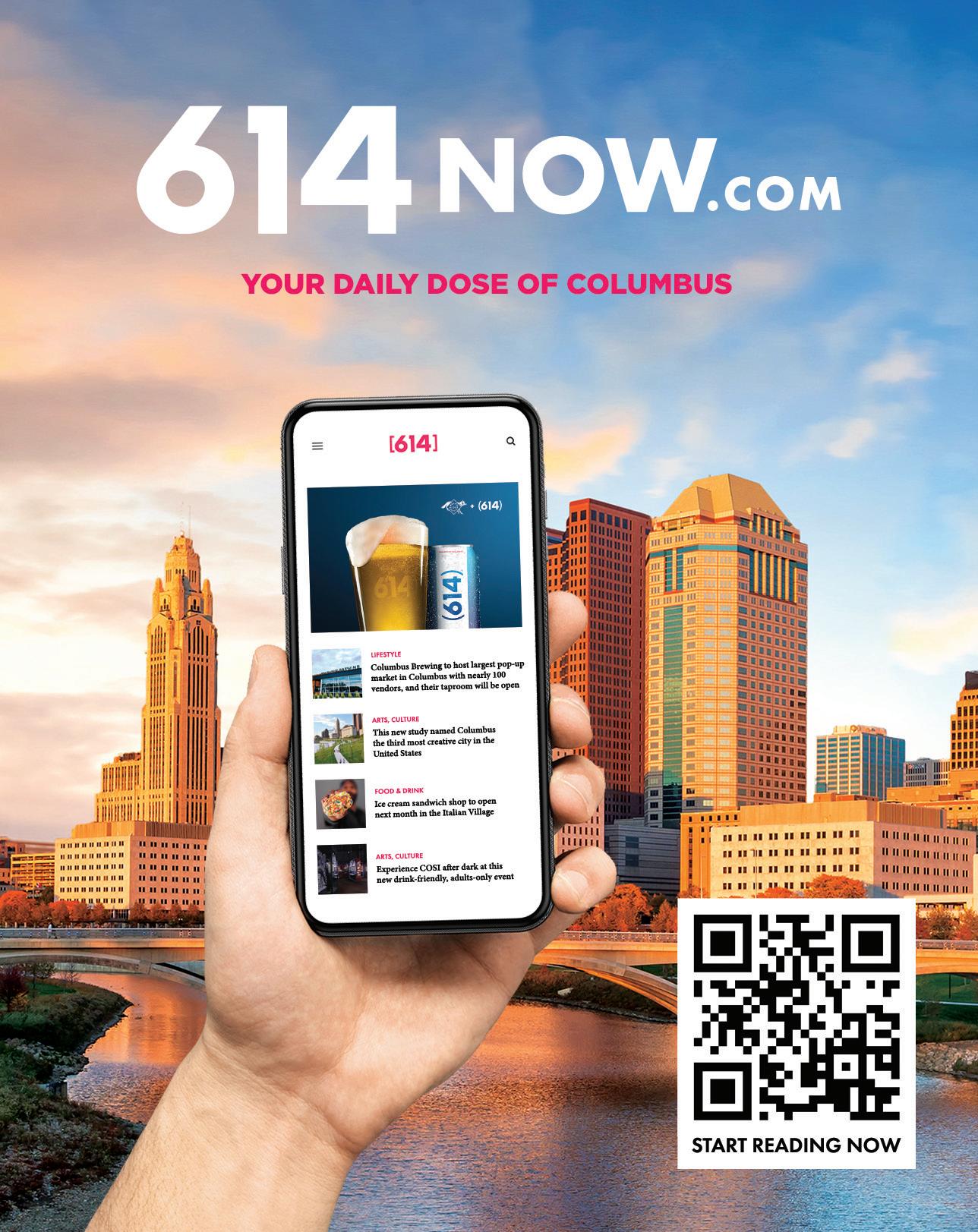
Columbus magician puts city under his spell after grabbing third place in the international “Olympics of Magic”
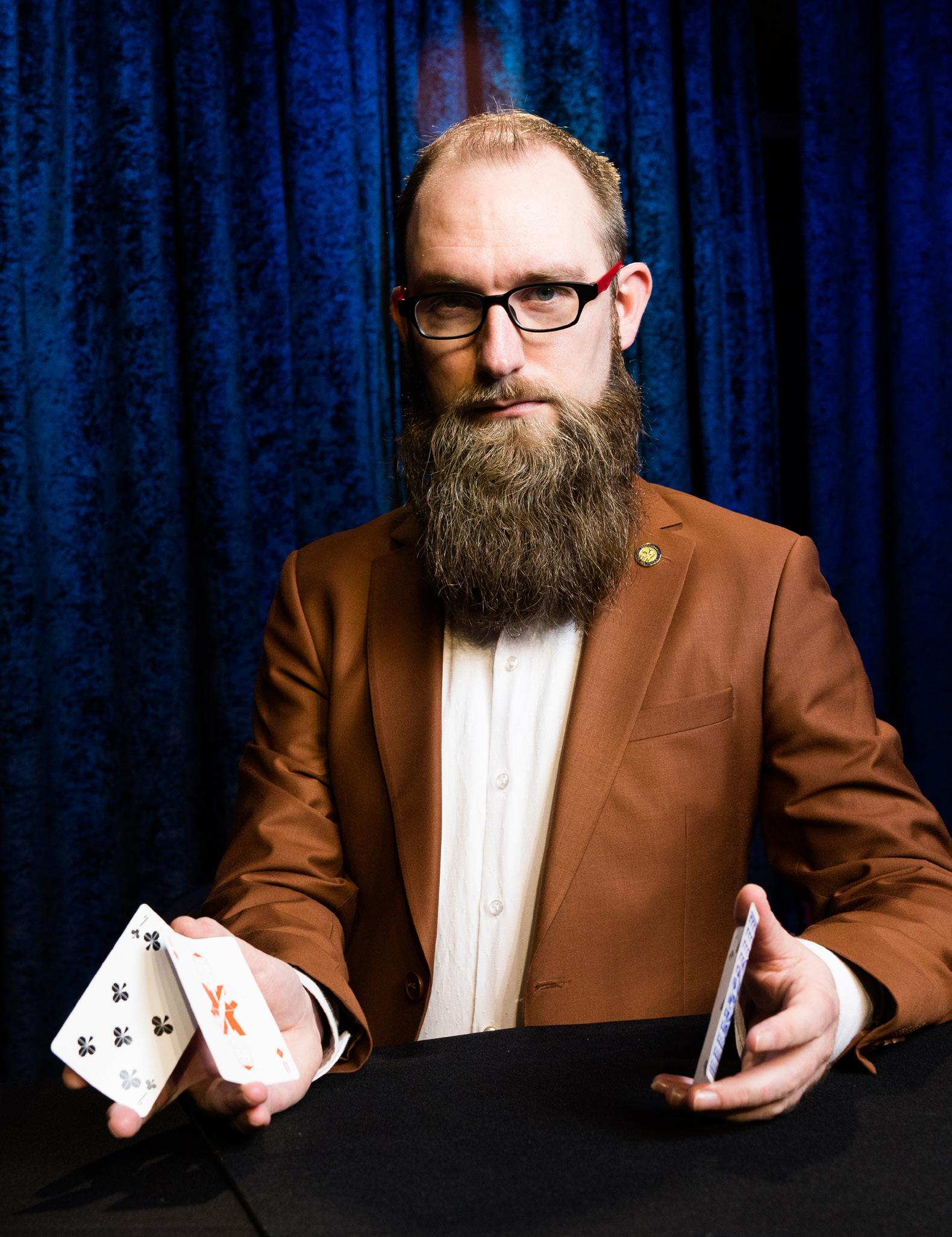
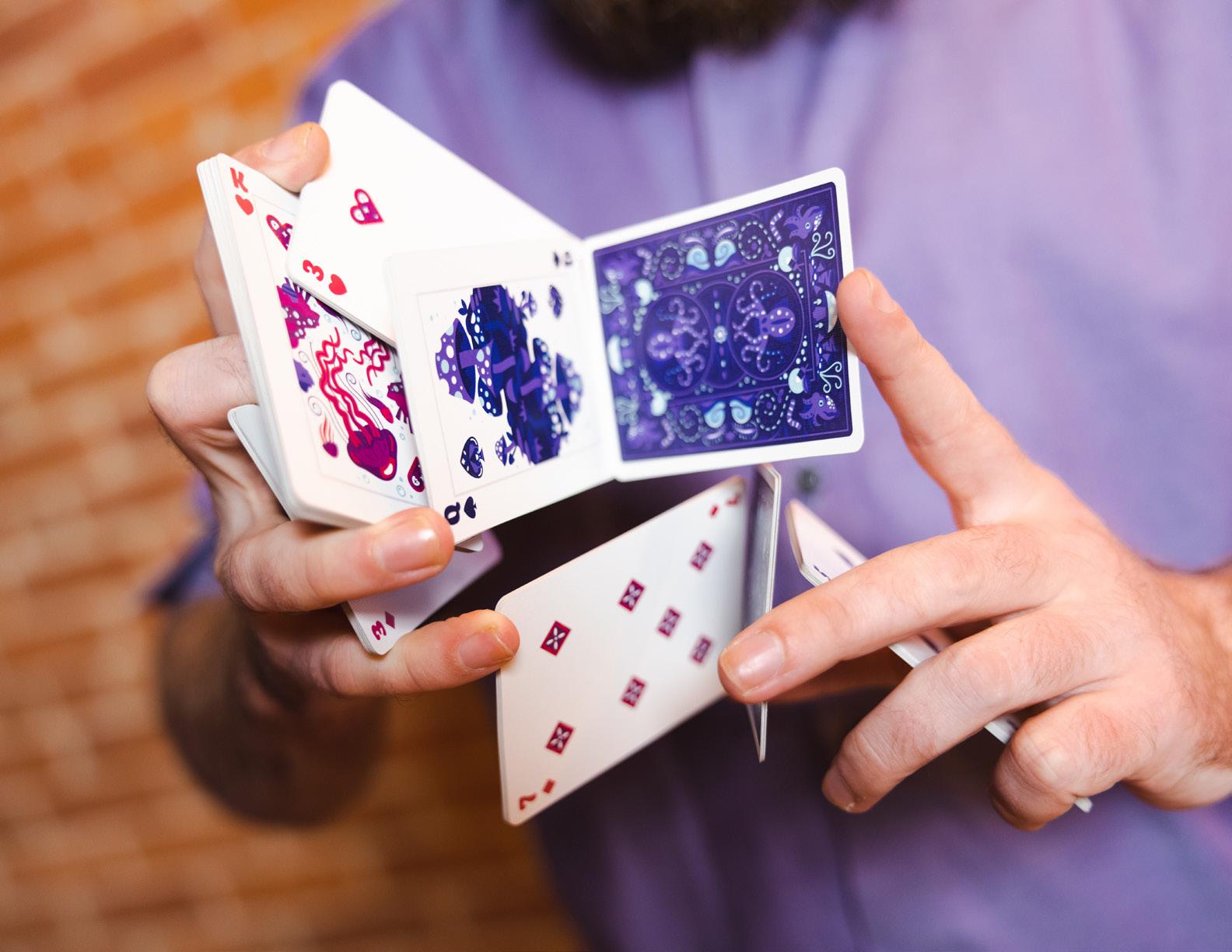

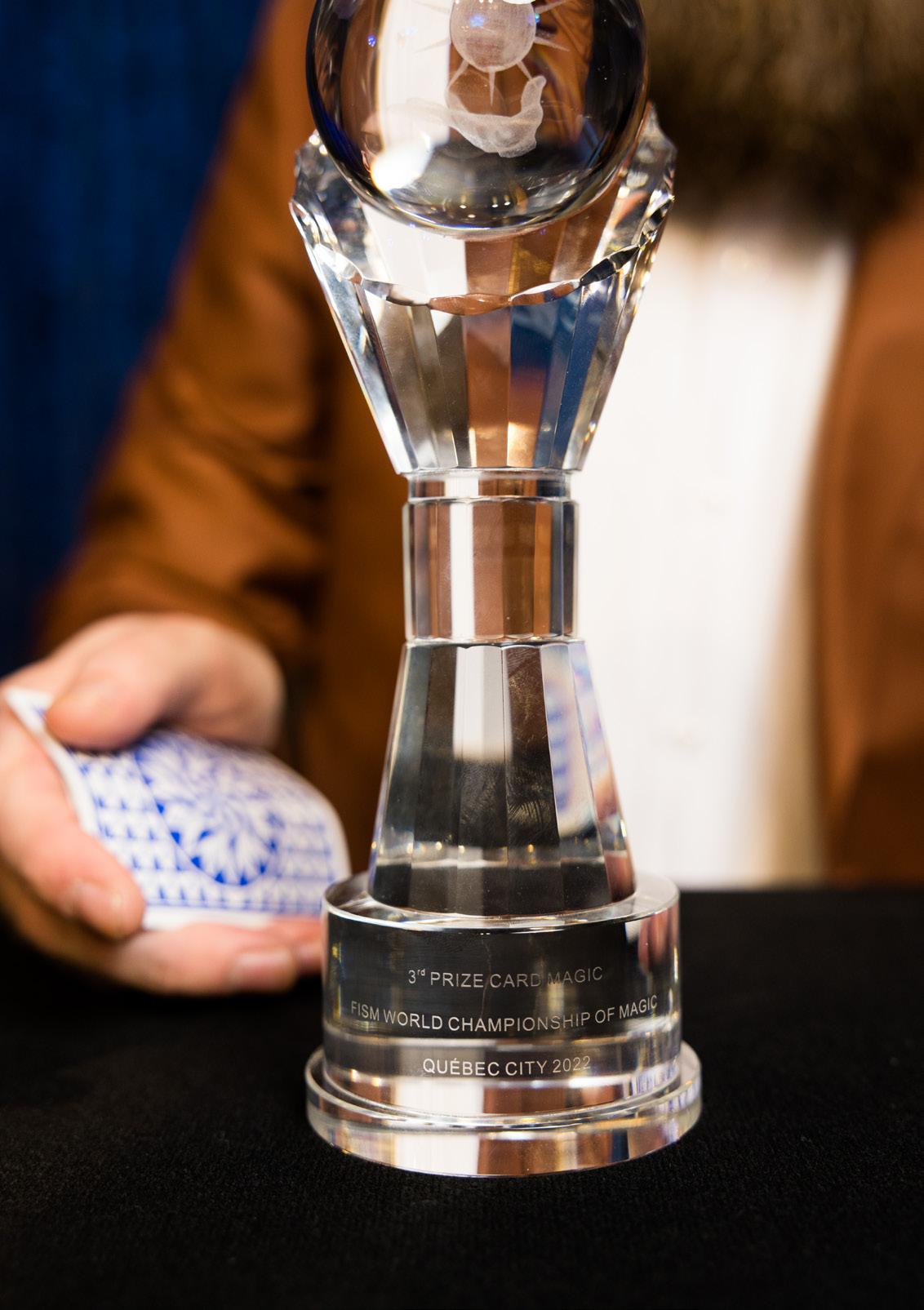 ↓ The third prize trophy Tait won in the Card Magic category of the 2022 World Championship of Magic
↓ The third prize trophy Tait won in the Card Magic category of the 2022 World Championship of Magic
“It’s nice because it allows me to take on the gigs that I want to do,” he said. “If a big company calls me up and says ‘Hey, I want you to come out and perform,’ if the company doesn’t align with my values, then I don't have to say yes. It allows me to do charity shows, too—charities obviously can’t pay you what you’d like, but because I have a regular income from [Penguin], I can kind of do whatever I want.”
Unlike most magic companies, who manufacture overseas and warehouse stateside, Tait said, the vast majority of Penguin’s effects and props are handmanufactured by a team of magicians in Columbus (Clintonville, to be exact).
“I think that’s something that’s very important to magicians: to know that a magician actually handled and put together the prop.”
Tait develops tricks and effects that are then filmed in bars in the Short North and other trendy locations. “You can’t sell a magic trick if you can’t actually prove that it gets a reaction,” Tait said. “So we take them out, we film the performances, then we take it back to our studio and film the tutorial.”
Tait produces, directs, and edits the tutorial shoot, and even takes over the on-camera job as well if the person who created the trick isn’t comfortable on camera.
He also hosts the Penguin Magic podcast (“by magicians, for magicians”). The idea is to sell magic tricks, of course, but also to facilitate that late-night, 2am-ata-magic-convention conversation between two people. “It’s just this big, weird place for magicians to platform ideas that don’t fit neatly anywhere else,” he explained.
“We are in probably a new golden age for magic, from what I can tell,” he continued. “I’m very fortunate that Columbus is a big city that can support some really wonderful magicians. On top of that, more and more magicians are becoming popular on social media platforms like Instagram and TikTok.
“People are starting to get that magic isn’t for kids. Eight, nine years ago, I’d tell people I'm a magician, and they would go ‘Oh! My kid’s birthday party is in three weeks; you should really come

do something.’ And I'd have to launch into this long, weird explanation where I'm like ‘I do card magic that deals with time dilation, multiple reality theory, and principles of chaos. I don’t think your kid gives a shit that I can deal four aces from a deck at will.’”
In August 2022, Tait placed third in cards at the Fédération Internationale des Sociétés Magiques (International Federation of Magic Societies) World Championship of Magic, known informally as “The Olympics of Magic.”
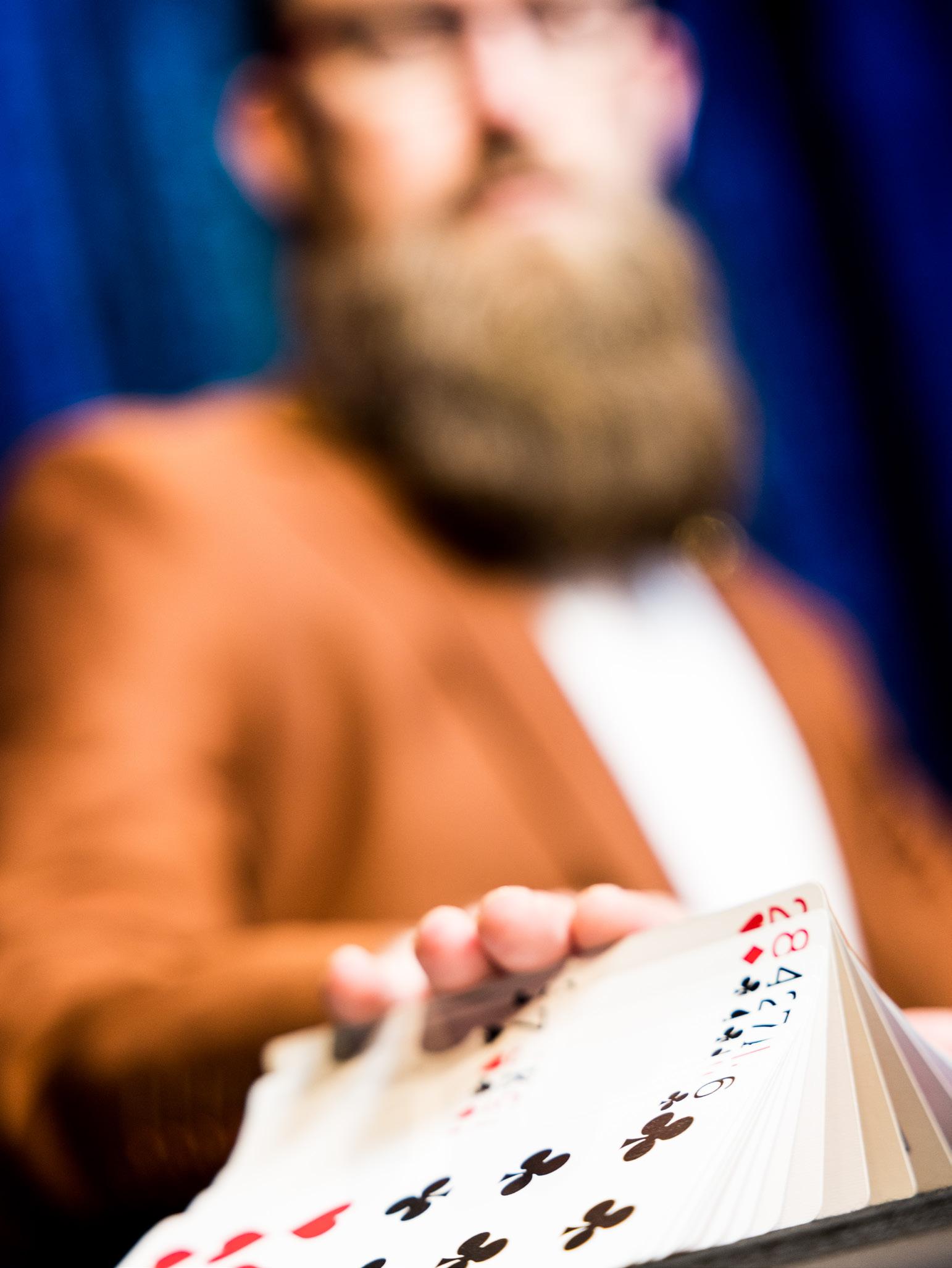

“I went with the idea to participate, not to win,” Tait said. “These are the best magicians in the world. There were 150 competitors from 30 countries.”
A lot of those competitors were magicians Tait looked up to as a child.
“To actually win a prize in card magic is—not to toot my own horn, but it’s widely considered to be one of the most difficult to win a prize in, and one of the most competitive categories.
“To win that level, win that prize, is truly unbelievable. There’s no heats, or anything like that. You have one shot to go out there in front of a thousand magicians and lay it down.”
At an afterparty, somebody asked him “Do you understand that you’re the fourth American ever to stand on that podium, and the first one to do that in twenty years?” Other Americans have done well, but not in the card category. Tait recalled, “It was pretty overwhelming and humbling.”
So is he going to try again? “No. I’m done competing,” he said decisively. “It’s stressful and expensive, and the only thing you come away with is glory. It’s not like I won prize money for this. There’s no sponsors; no one was paying for the suits, or the music, or the supplies along the way. It was all me.”
Plus, he would need to come up with an even better idea for the next time, and it’s tough to design and perfect a trick good enough to stand on the world stage.
“Some of the best magicians in the world come from the United States; that’s not up for debate,” he said. “But they’re interested in paying their mortgage. If we could find a way to make competition more than just taking home a trophy, that would be fantastic. Whatever I can do to help future competitors is what I'm working on.”
Well, that, plus all his other ways of sharing, teaching, and advocating for magic, to be exact.



